Artists
Included in the Entartete Kunst Exhibit of 1937
Works and
Information compiled and chosen by JK Harrell
This Page is governed wholely under the laws of nature and culture pertaining to the free, open, and complete access to Art. This is an inherent human right, forthwith referred to as The Art Code/De Code der Kunsten.
Please note: 25 March
2005-18 September 2005 There will be an exhibit about German Expressionism (which
includes many of the artists that are listed below) at the Groninger Museum,
Groningen, The Netherlands:
Van Kirchner tot Kandinsky
Duits Expressionisme uit Nederlandse Musea, 1919-1964
Werk van de Duits
expressionistische groeperingen Die Bruecker en Der blaue Reiter. Verder werk Beckmann, Grosz, Kokoschka
en Dix.
(From Kirchner to Kandinsky German Expressionism from Dutch Museums,
1919-1964
Work from the German expressionistic group Die Bruecker (The Bridge) en
Der blaue Reiter (The Blue Horseman/Rider). Further work Beckmann, Grosz, Kokoschka and Dix.)
"A work of art
carries its defence within itself." ~ Jean Cocteau. The Difficulty of
Being.
What is Entartete Kunst? Go here.
To mark the 60th
anniversary of the liberation of Auschwitz on 27/1/2005, I have compiled a sort
of exhibit of all of the artists which were relegated to the Entartete Kunst
(Degenerate Art) exhibit, which was visited by 3 million Germans as it traveled
around the country in 1937 and 1938.
This was the first great super exhibit that spurred our own record
breaking exhibits: the last world record breaker, I believe, was the 2002
Gauguin and van Gogh exhibit at the van Gogh Museum in Amsterdam.
I am finding it very
interesting to see what degenerate art is and why it is so important to embrace
Modern and Avant Garde art: we can see from the past what could become of
artists, and their artworks, which come from the wrong culture or ask the wrong
questions about the world around them.
Firstly however I
offer you the original catalogue of the original exhibit, Entartete Kunst,
which opened in Muenchen in 1937: actually the "Fuehrer" offers it to
you. (In
German with illistrations and prints).
It is important to
point out that I do not know which particular works by each artist that were
shown, however I have tried my best to represent the artists' work and if
possible their development. In
rare exceptions, all of the pieces below were created before the exhibit in
1937. I have done this to best
demonstrate the artworks, which were labeled degenerate.
Without Artcyclopedia
and Wikipedia,
I would have been unable to offer this exhibit. The list of degenerate artists comes from: A Teacher's Guide to
the Holocaust.
To see the art of
which the National Socialists approved you can look at this rather nice website
(in German, unfortunate for the native English speaker): http://www.kunst.gymszbad.de/nationalsozialismus/index.htm. Besides being an extremely fascinating
site, it also contains a fascimile of the original catalogue of the Entartete
Kunst Ausstellung that opened in Muenchen in 1937.
Here, I would like the chance to remember Walter Benjamin
(1892-1940):
"The logical result of Fascism is the introduction of aesthetics
into political
life."
"All efforts to render politics aesthetic culminate in one thing:
war."
Walter Benjamin. "The Work of Art in the Age of
Mechanical Reproduction," 1935. Illuminations:
Essays and
Refelections.
New York: Harcourt, Brace & World, 1968. p 241.
Finally a good translator, if needed, can be found at http://www.interglot.com/.
Sign my Guestbook
/ View my Guestbook

Entartete
Kunstlers
Artists in alphabetical order according to surname.
â
Adler, Jankel
Jankel Adler-Painter
and printmaker, born in Lodz, Poland of Jewish parents. Studied at the School
of Applied Arts in Barmen, (now Wupperthal) Germany from 1916 onwards.

Jankel
Adler. Composition. Oil and sand on card laid
down on board. 46 x 52 cm.

Jankel
Adler. Bird. 1944. watercolour on paper.
â
Barlach, Ernst
Ernst Barlach, (January 2, 1870 in Wedel,
Pinneberg,
Germany - October 24, 1938 in Rostock, Germany) was a famous
German expressionist
sculptor. He also worked
as a graphic
designer and writer.
While he was a supporter of the war in the years leading to World War I, his
participation in the war reversed his position, and he is mostly known for his
sculptures against the war. This created many conflicts during the rise of the
Nazis until most of his works were confiscated as degenerate art.

Ernst
Barlach. Magdeburger Ehrenmal (Magdeburg cenotaph). 1929.
â
Bauer, Rudolf
Rudolf Bauer was an
artist whose brief fame was much dependent upon is romantic relationship with
New York abstract artist, Hilla Rebay, the founder of the Museum of Non
Objective Painting, which was later named the Guggenheim Museum. In Berlin,
thanks to the help of Rebay, he had a gallery, which he opened in 1930 but
closed in 1932 due to mismanagement.
He also
unsuccessfully submitted his name as a candidate for the Ministry of Culture
during the Nazi Era, although he was not a member.

Rudolf
Bauer. Standing Woman. 1916.

Rudolf
Bauer. Composition 121. 1921.

Rudolf
Bauer. Fuguetto. 1935.
â
Bauknecht, Philipp
No Images Available.
â
Baum, Otto
No Images Available.
â
Baumeister, Willi
Biography:
"From 1905 to 1907 Willi Baumeister completed a training in
painting and decorating, which was
likely the source of his lifelong sense of a fitting use of materials,
and his enjoyment of
experiment. Admitted in 1906 to the drawing class at the Akademie der
bilden den Kunste,
Stuttgart, he became a student in Adolf Hö1zel's composition class there
in 1910. "In 1919-1920,"
Baumeister noted, "I made paintings conceived for an architecture
that did not yet exist at the
time. In contrast to Archipenko, I strove not for an isolated, colored
relief but began with a
component of architecture, the wall. The result was paintings with
actual, raised surfaces, which,
as it were, hesitatingly grew out of the wall, without controverting its
laws... I called these
pictures 'wall paintings,' to emphasize the contrast with 'easel
paintings'." Many of Baumeister's
wall paintings contain rough-textured passages obtained by adding sand
to the paint, a technique
he would continue to use a11 the way down to the late Monturi pictures.
Color and form were
treated in accordance with the law of perfect harmony and clarity, for
Baumeister's intent was to
expunge all subjectivity from his art. In the early 1930s he recurred to
archaic configurations,
which lent his style reminiscences of neolithic cave painting.
- From 20th Century Art:
Museum Ludwig Cologne

Willi
Baumeister. Stehende Figur mit blauer Flache (Standing Figure with Blue
Plane). 1933. Oil and sand on canvas. 82 x 65.5 cm. Museum
Ludwig, Cologne.

Willi
Baumeister. Figurative with Red
Elipse. 1920.

Willi
Baumeister. African Play, IV.
1942.
â
Bayer, Herbert
Herbert Bayer (1900-1985) was an Austrian graphic designer.

Herbert
Bayer. Einsamer Grosstadler (The Lonely Metropolitan). 1932.

Herbert
Bayer. 106 S.
â
Beckmann, Max
Max Beckmann (February 12, 1884 - December 27, 1950) was a German painter, lithographer and woodcut artist.

Max
Beckmann. Self Portrait in Tuxedo.
1927. 139.5 x 95.5cm.

Max
Beckmann. The Night (Nacht). 1918-19.
â
Belling, Rudolf

Rudolf
Belling. No. 100. Lithography.

Rudolf
Belling. Bluetenmotiv. 1967. Bronze cast from
2001 plaster from 1967. Hight 43 cm.
â
Bindel, Paul
No Images Available!
â
Brün, Theo
No Images Available!
â
Burchartz, Max

Max
Burchartz. Composition: face, fish and hand.

Max
Burchartz. Industrial District at Gelsenkirchen.
Photomontage.
â
Burger-Mühlfeld, Fritz
No Images Available!
â
Camenisch, Paul
Very Limited
Information Available!
â
Caspar, Karl

Karl
Caspar. Johannes auf Patmos. nicht datiert.
Lithographie. 23 x 21 cm.
â
Caspar-Filser, Maria

Maria
Caspar-Filser. Biberach mit Magdalenen-Kirche.
1916. Öl auf Leinwand. 44,5 x 57 cm.
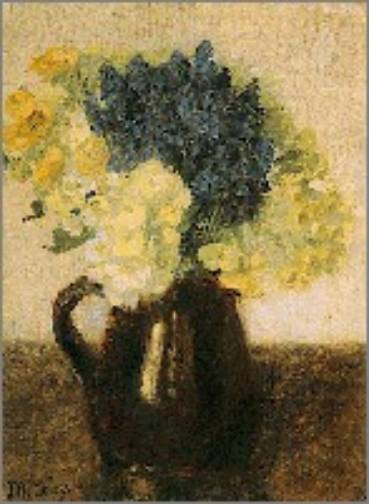
Maria
Caspar-Filser. Unknown.
â
Cassel, Pol
Very Limited
Information Available.
â
Chagall, Marc
Marc Chagall (July 7, 1887 - March 28, 1985) was a Belarusian painter of Jewish origin.
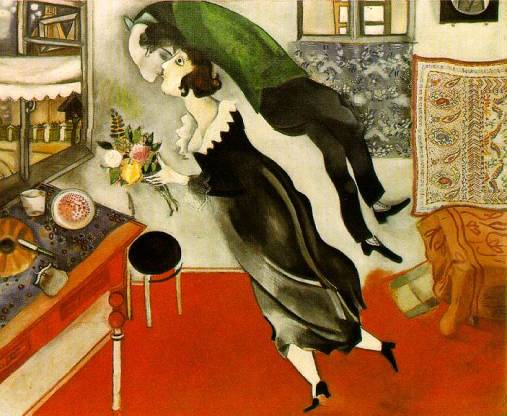
Marc
Chagal. Birthday.

Marc
Chagal. White Crucifixtion.

Marc
Chagal. I and the Village.

Marc
Chagal. Self-Portrait with Seven Fingers.
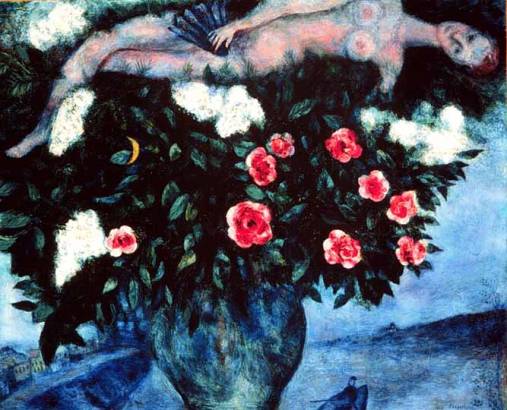
Marc
Chagal. The Woman with the Roses.
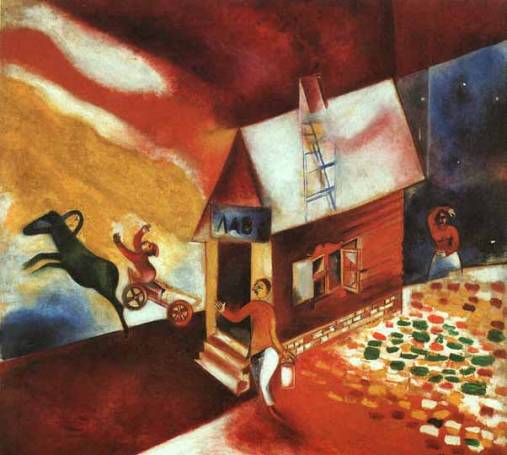
Marc
Chagal. The Flying Carriage.
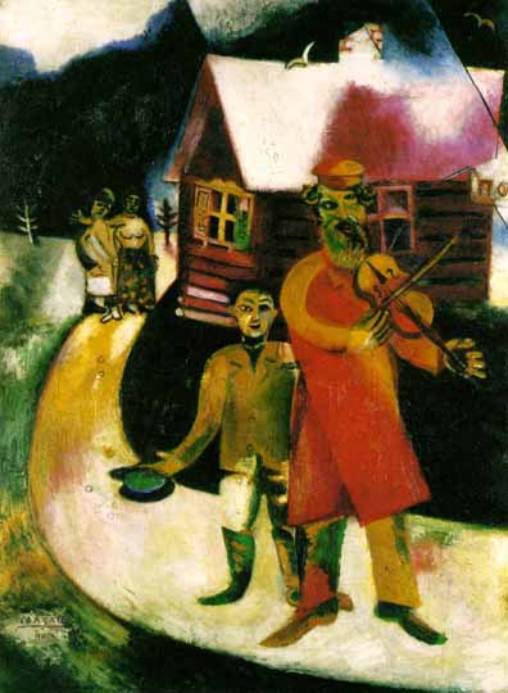
Marc
Chagal. The Violinist.
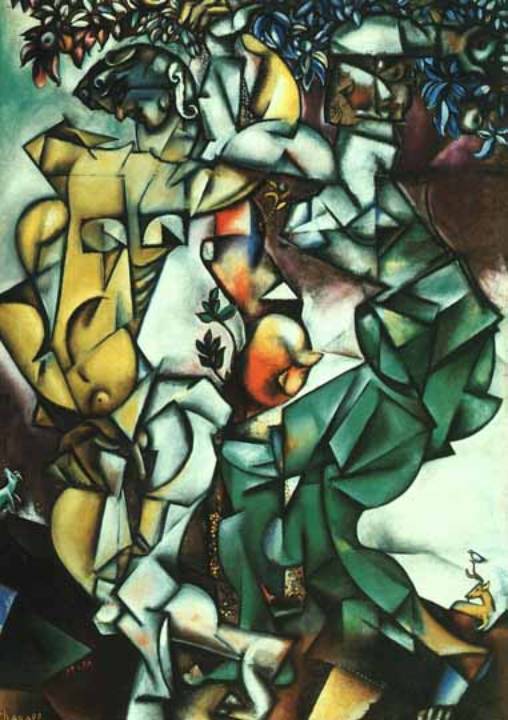
Marc
Chagal. Adam and Eve.

Marc
Chagal. The Cattle Dealer.
â
Corinth, Lovis
Lovis Corinth (July 21, 1858, Tapiau,
East Prussia (today Gwardeisk
in the Russian enclave Kaliningrad Oblast) - July 17, 1925, Zandvoort, Netherlands) was a German painter who found a
synthesis of impressionism
and expressionism.
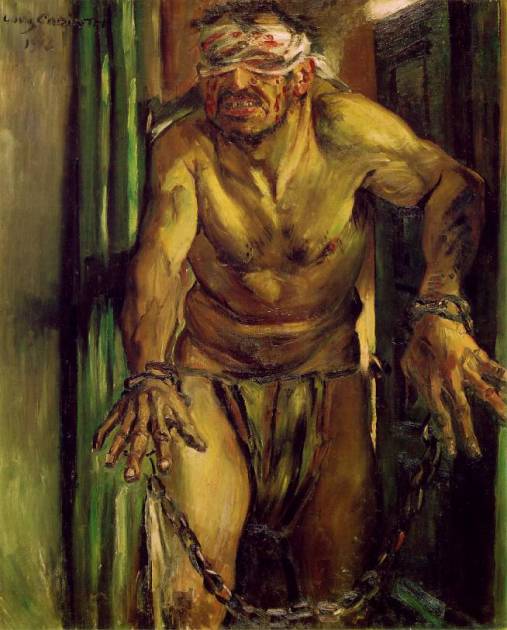
Lovis
Corinth. Samson Blinded. 1912. Oil on canvas. 130
x 105 cm. Nationalgalerie, Berlin.
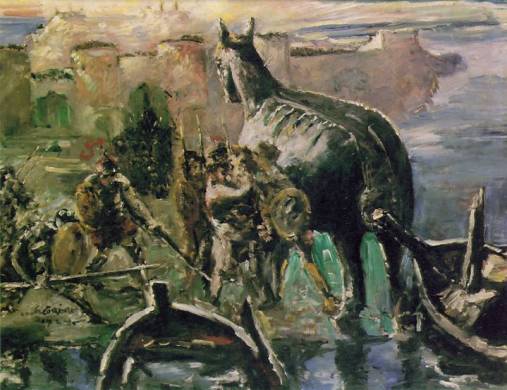
Lovis
Corinth. Das trojanische Pferd (The Trojan horse). 1924. Oil on canvas. 105 x 135 cm. Nationalgalerie, Berlin.
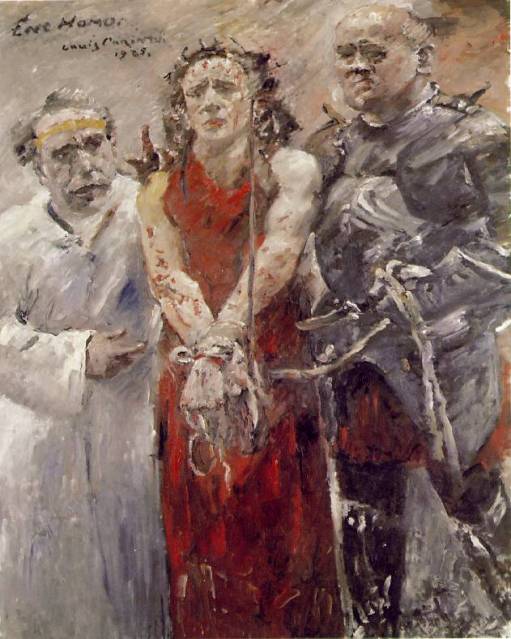
Lovis
Corinth. Ecce Homo. 1925. Oil on canvas. 189
x 148 cm. Kunstmuseum Basel.
â
Davringhausen, Heinrich
Biography (German)
Heinrich Maria
Davringhausen gehört zu den bedeutenden Malern der nachexpressionistischen
Generation.
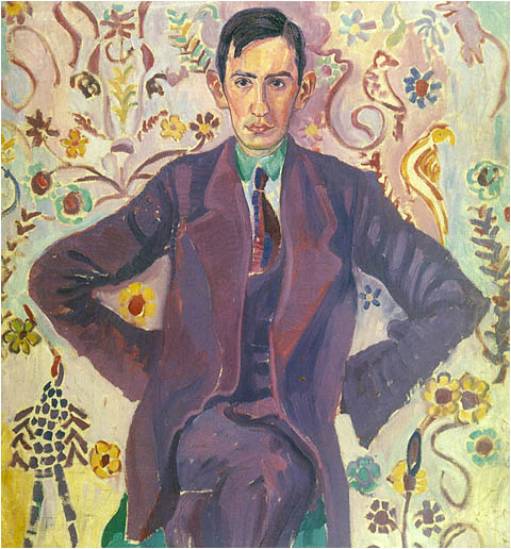
Heinrich
Davringhausen. Männliches Porträt.
1912/13. Öl auf Leinwand. 97,3 × 90,7 cm.
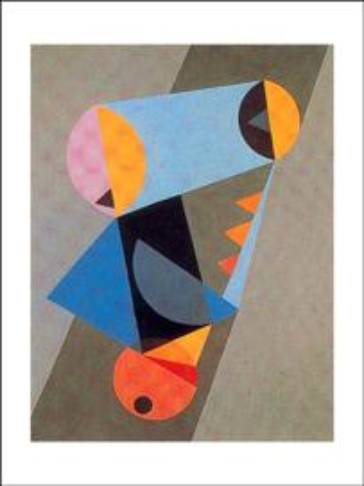
Heinrich
Davringhausen. Ohne Titel.
â
Dexel, Walter
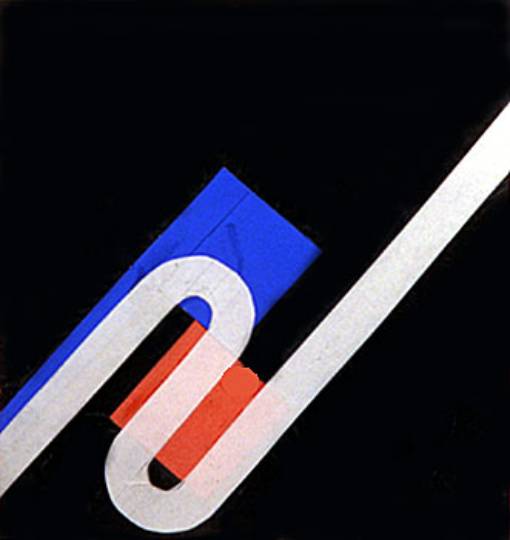
Walter
Dexel. Entwurf zur Komp.mit weisser S-Form.
1930.

Walter
Dexel. Abstrakte Komposition. 1922.
â
Diesner, Johannes
No Image Available.
â
Dix, Otto
Otto Dix (1891-1969) was a German expressionist and
anti-war painter and a veteran of the First World War. His most
famous paintings were Metropolis (1928) and a 1932 triptych Trench Warfare.
----
Otto Dix was another
expressionist painter whose work was influenced by the experience of World War
I. He was appointed professor at the Dresden State Academy, but was dismissed
in 1933 when the Nazis came to power. Two hundred sixty of Dix's paintings were
removed from German museums in 1937. Many of these were burnt on Goebbels's
order. Dix survived on a remote farm until 1945 when he was drafted by the
Nazis and then captured by the French and made a prisoner of war. After the
war, Dix returned to teaching.
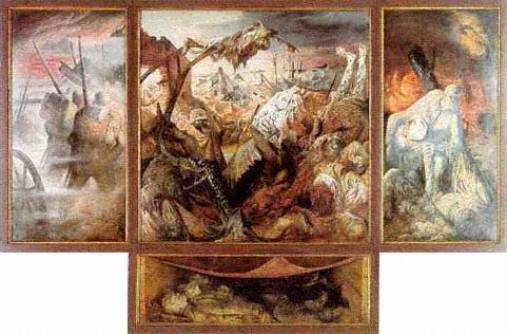
Otto
Dix. War Triptych. 1932.

Otto
Dix. Großstadt Triptychon. 1928.
â
Drexel, Hans Christoph
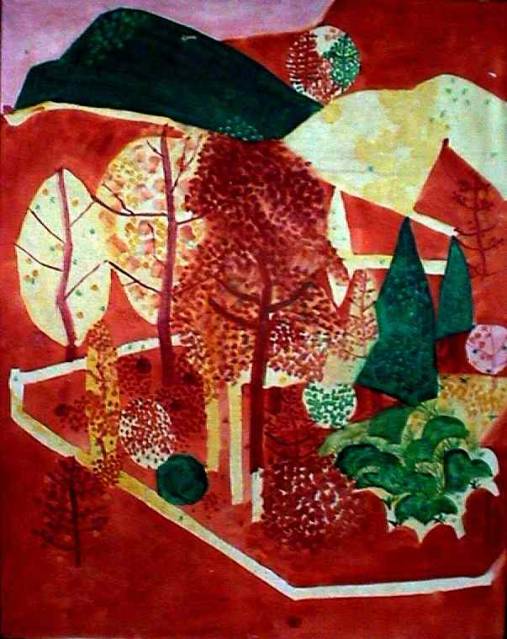
Hans
Christoph Drexel. Herbst. 1915-1920. Öl auf
Leinwand. 112 cm x 87 cm.
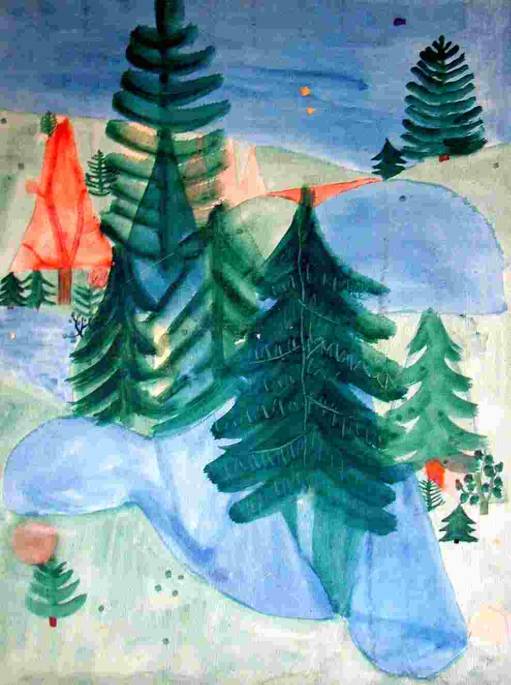
Hans
Christoph Drexel. Tannen.1915-1920. Öl auf
Leinwand. 108 cm x 86 cm.
â
Dreisch, Johannes
No Image Available.
â
Eberhard, Heinrich
Very Little
Information Available.
â
Ernst, Max
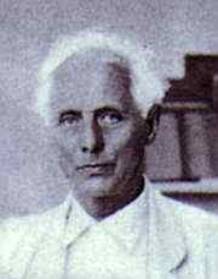
Max Ernst
Max Ernst (April 2, 1891 - April 1, 1976) was a German painter.
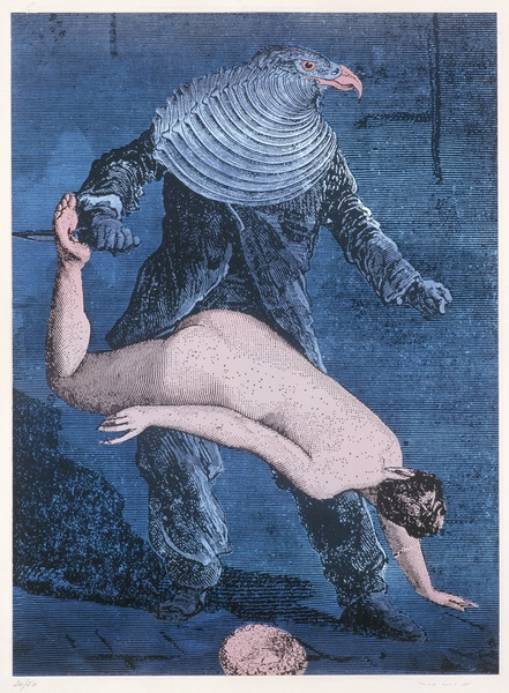
Max
Ernst. Ohne Titel.
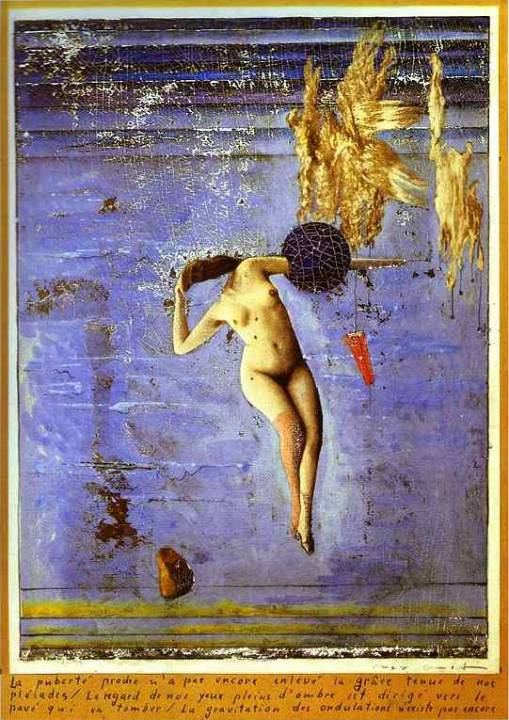
Max
Ernst. Approacing Puberty or The Pleiads/La Puberté proche... ou Les
Pléiades. 1921.
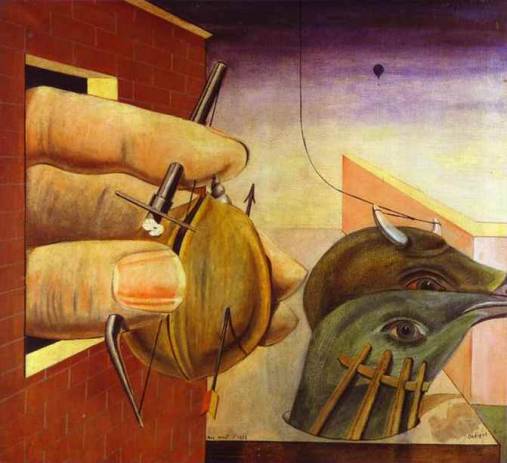
Max
Ernst. Oedipus Rex. 1922.
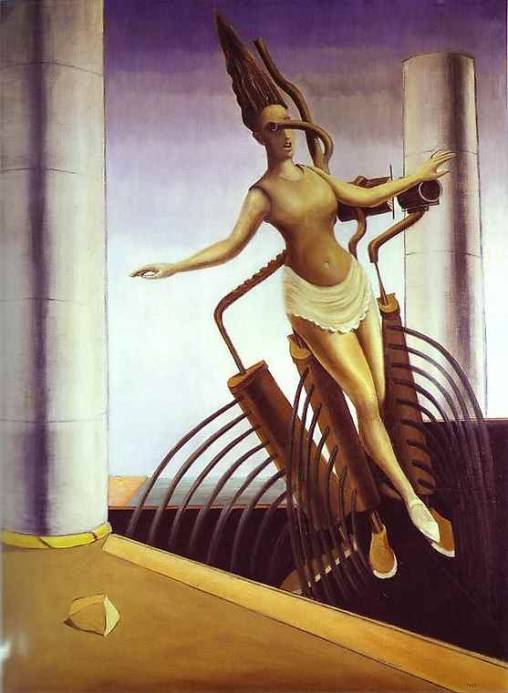
Max
Ernst. The Equivocal Woman (also known as The Teetering Woman). 1923.
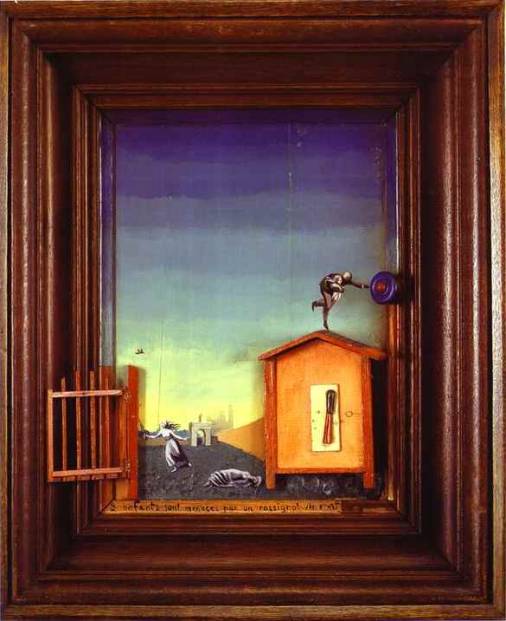
Max
Ernst. Two Children are Threatened by a Nightingale. 1924.
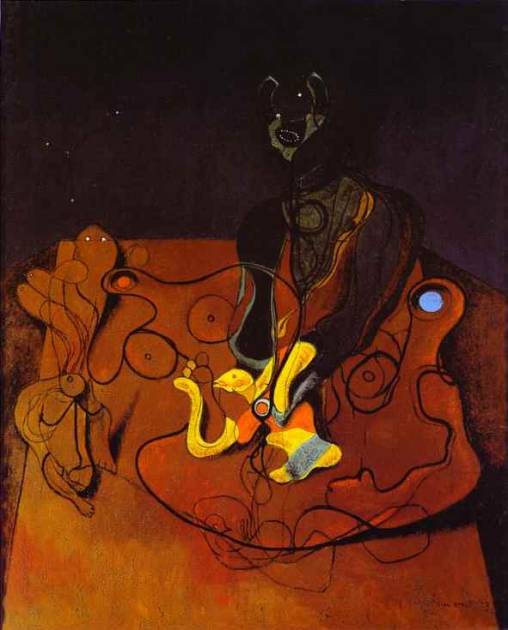
Max
Ernst. A Night of Love / Une nuit d'amour.
1927.
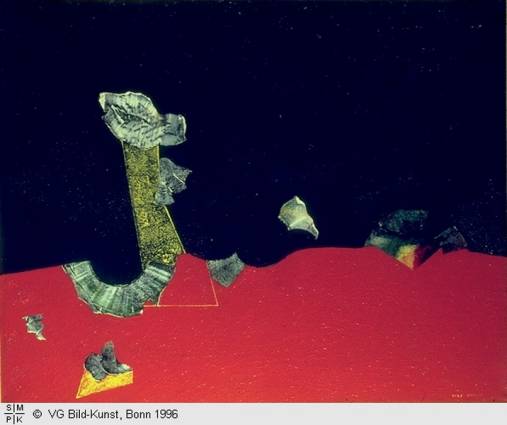
Max
Ernst. Paysage coquillages / Muschellandschaft.
1928.
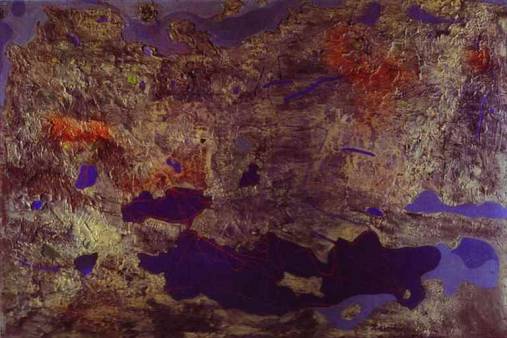
Max
Ernst. Europe after the Rain I. 1933. Oil and
gypsum on plywood. 101 x 149 cm.
â
Feibusch, Hans
Hans Feibusch, sculptor and
muralist was born into a Jewish
family in Frankfurt-on-Main,
Germany. He studied Fine
Art in Italy before becoming a prominent member of several art
societies in Frankfurt. His early work consisted of mythological paintings and still-
lifes. In 1930
Feibusch received the
German Grand State Prize for Painters, but in 1933 he had to flee Germany
as a result of the political
climate. He settled in England and became a prolific muralist of
churches and cathedrals. Between 1938 and 1970 he painted 40 murals included those at St Alban
the Martyr in London, Chichester Cathedral and Goring Church in Sussex. Feibusch is
considered to
be a remarkable colourist
and his style has matured with time. "I started working in a new way...I
tried to paint what I felt
as directly as possible. This simplification looks as if I have gone back in
style but it is only a stripping
of my stylised habits so I may come to the purest most direct form
and express what I feel". (H Feibusch)
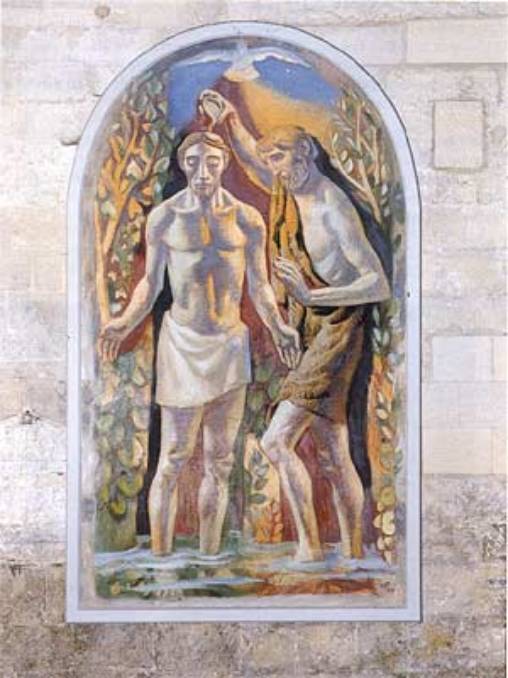
Hans
Feibusch. Baptism of Christ.
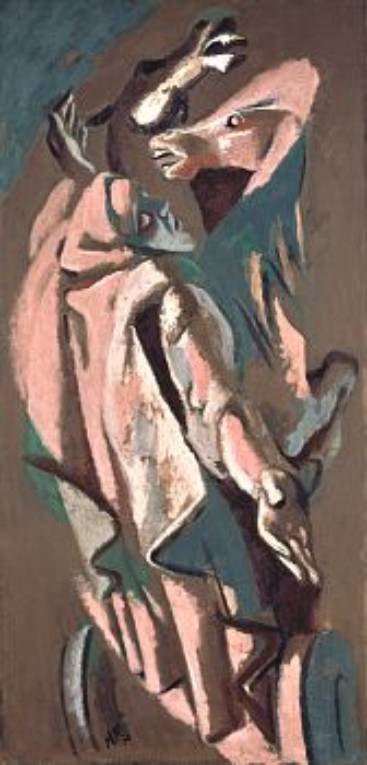
Hans
Feibusch. Elias' Himmelfahrt. 1936.
â
Feininger, Lyonel
Lyonel Charles
Feininger (July 17,
1871 - January 13, 1956); was a German painter born of
German-American parents, trained and lived in Germany for many years.

Lyonel
Feininger. Teltow II. 1918.
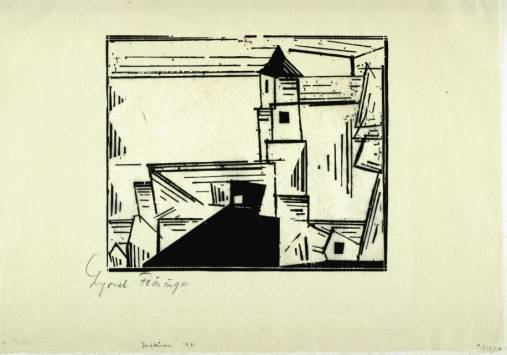
Lyonel
Feininger. Village Church. 1931.
â
Felixmüller, Conrad
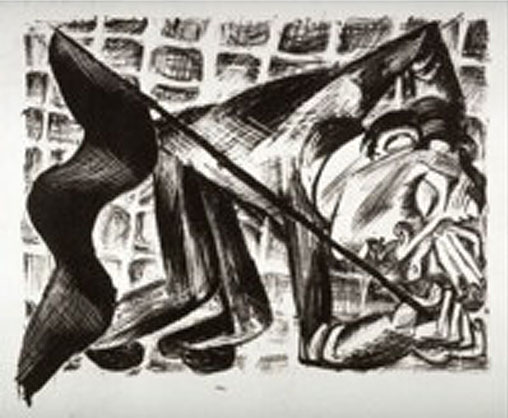
Conrad
Felixmüller. Toter Genosse (Dead Comrade).
1919. Lithograph.

Conrad
Felixmüller. Max John. 1920.
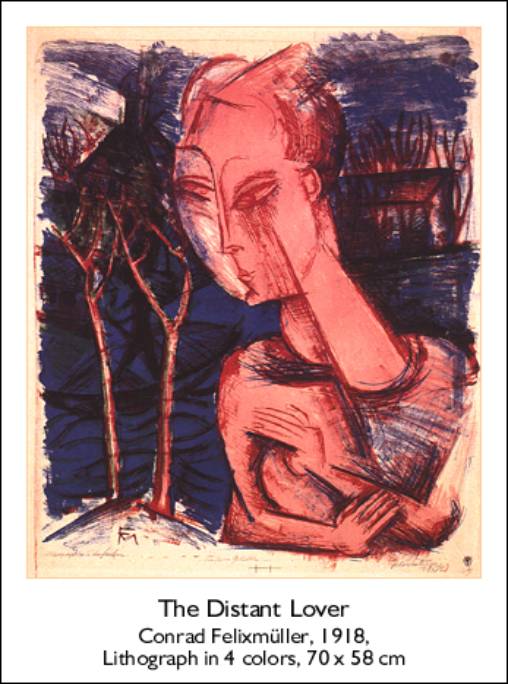
Conrad
Felixmüller. The Distant Lover. 1918.
â
Freundlich, Otto

Otto
Freundlich. Composition. 1924.
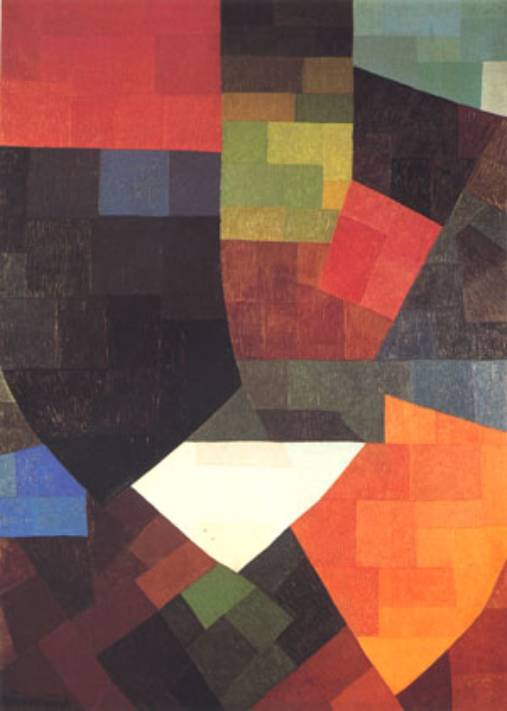
Otto
Freundlich. Composition. 1930. Oil on canvas.
130.8 x 97.1 cm.
â
Fuhr, Xaver
No Image Available before 1937.
â
Gies, Ludwig
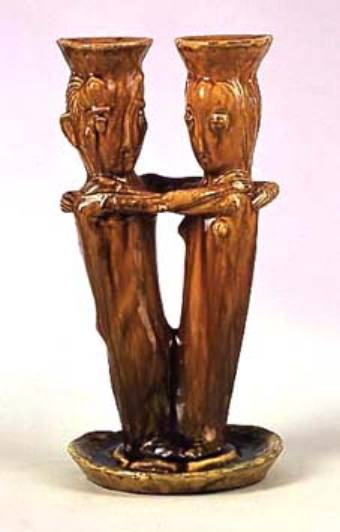
Ludwig
Gies. Adam und Eva Plastik.
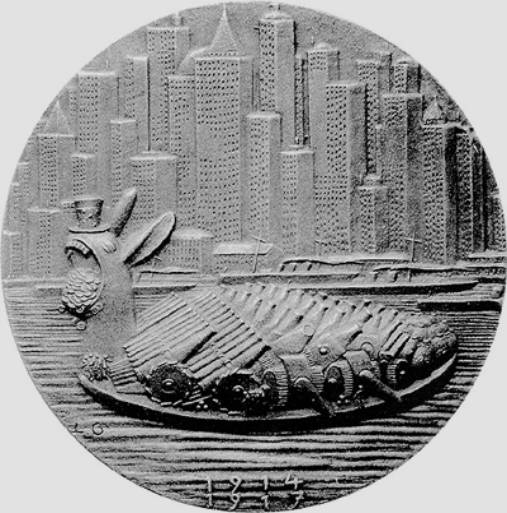
Ludwig
Gies. Einseitige Bronzegussmedaille.
1917.
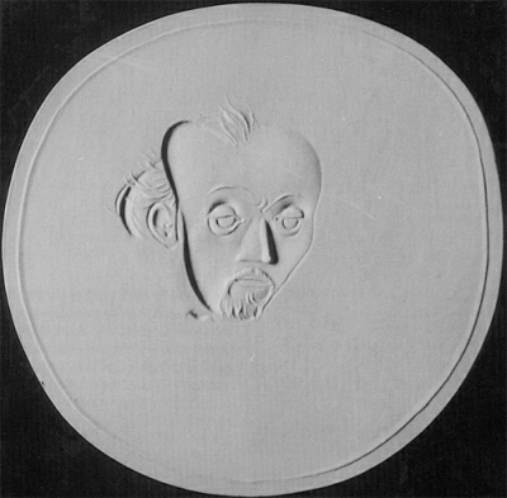
Ludwig
Gies. Einseitige Porzellanmedaille.
1932.

Lugwig
Gies. Zum Untergang der Lusitania.
1915.
â
Gilles, Walter
No Images Available.
â
Gleichmann, Otto

Otto
Gleichmann. Untitled, 1921.
Plate 5 from Chimären (Monsters).
Lithograph.
â
Grossmann, Rudolph
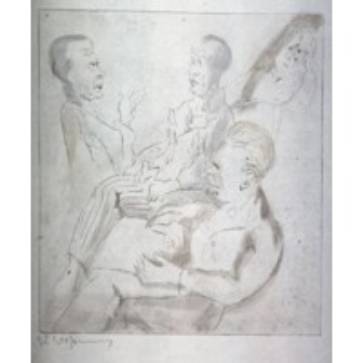
Rudolph
Grossman. The actors. Color etching. 27.1 x
23.9 cm.
â
Grosz, George
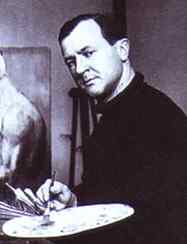
George Grosz
George Grosz (July 26, 1893 - July 6, 1959) was a prominent
member of the Berlin
dadaist art movement.
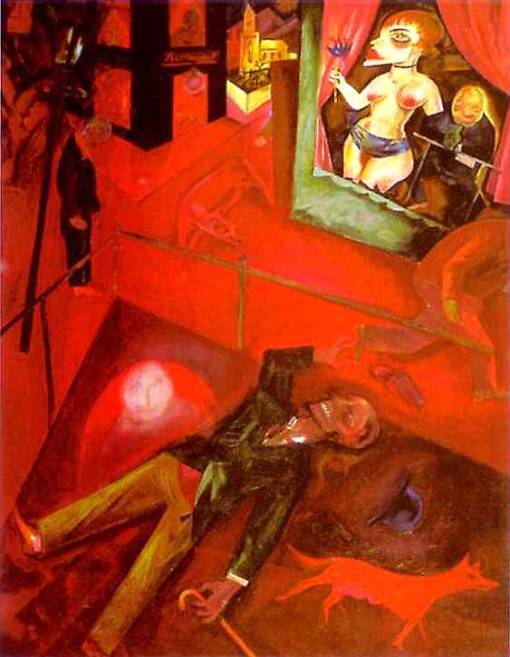
Geroge
Grosz. Suicide. 1916. Oil on canvas. 100
x 77.6 cm

George
Grosz. Lovesick. 1916. Oil on canvas. 99.7
x 76.5 cm.
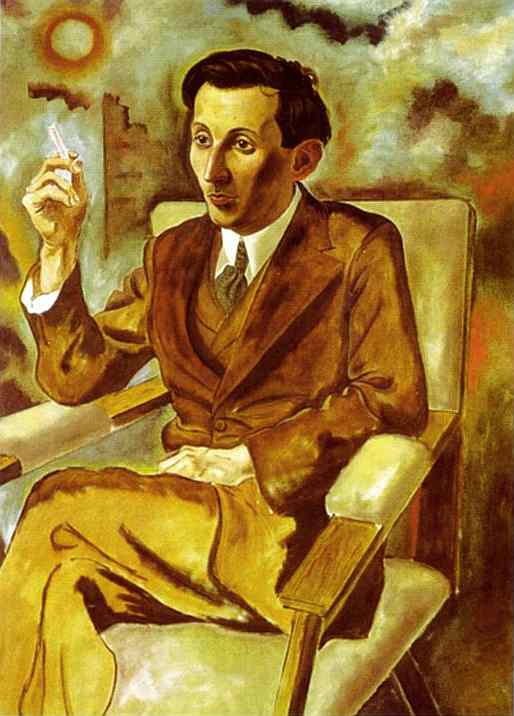
George
Grosz. Portrait of the Writer Walter Mehring.
1925. Oil on canvas. 90 x 80 cm.

George
Grosz. Artist and Model. 1928. Oil on canvas.
115.6 x 75.6 cm.
â
Grunding, Hans

Hans
Grundig. Vorstadt-Kind. 1930.
â
Haizmann, Richard
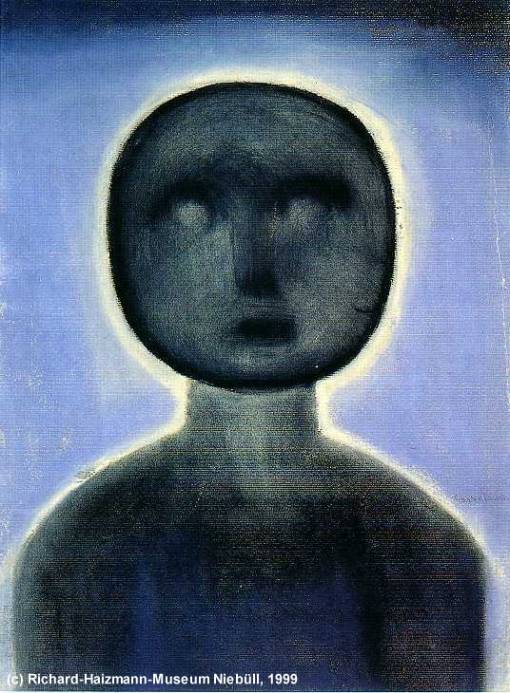
Richard
Haizmann. Kopf, dunkelblau. 1924. Pastell, laviert,
auf Papier. 68,1 x 49,9.

Richard
Haizmann. Frauenkopf. 1951. Holzschnitt. 36 x
53 cm.
â
Hausmann, Raoul

Raoul
Hausmann. The Art Critic. 1919-1920.
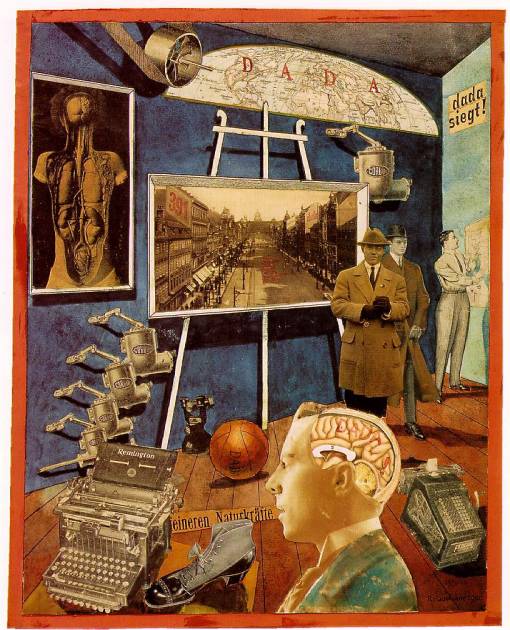
Raoul
Hausmann. Dada Siegt. 1920.
â
Hebert, Guido
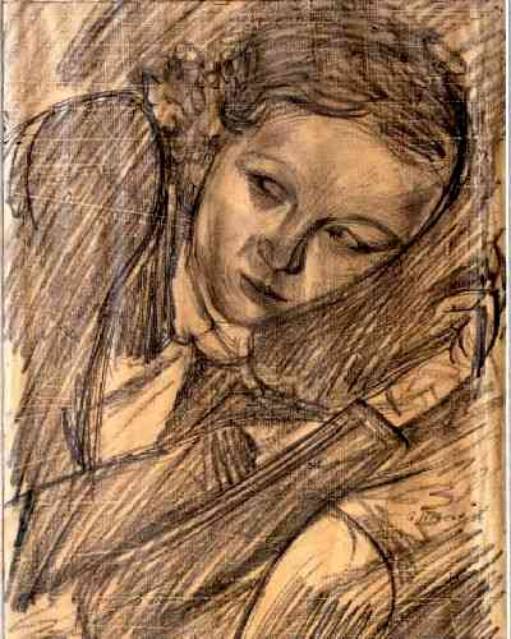
Guido
Hebert. Ruhendes Mädchen (Girl, resting).
1934. 49cmx39cm.
â
Heckel, Erich
Erich Heckel (1883-1970). German painter and print
maker.
In 1937 the Nazi Party declared his
work 'degenerate'; it forbid him to show his work in public, and over 700 items
of his art were confiscated from the nation's museums. By 1944 all of his print
blocks and printing plates had been destroyed.
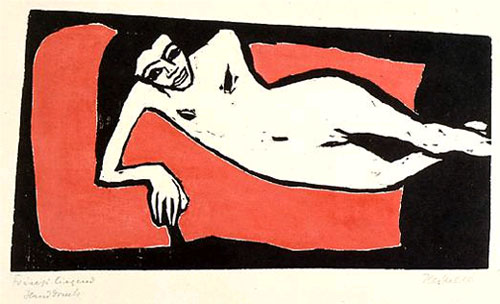
Erich
Heckel. Fränzi Reclining. 1910. Woodcut. 22.6 x
42.1 cm.
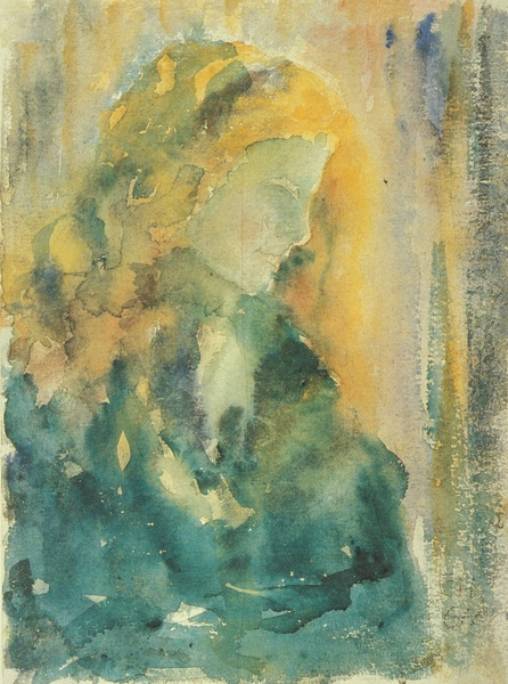
Erich
Heckel. Mädchenbildnis mit geneigtem Kopf.
1904.
â
Heckrott, Wilhelm
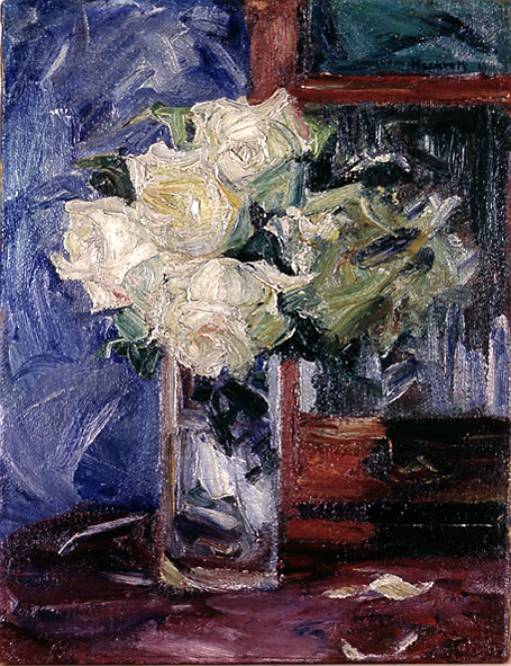
Wilhelm
Heckrott. Blumenstilleben Gemälde.
Heemskerck, Jacoba van
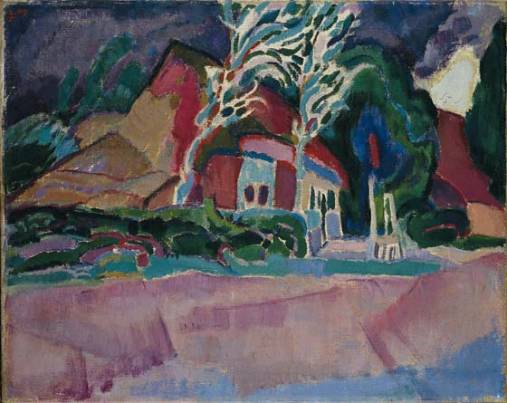
Jacoba
van Heemskerck. Unknown Title.
â
Heister, Hans Seibert von
No Images Available.
â
Herzog, Oswald
No Images Available.
â
Heuser, Werner
No Images Available.
â
Hoerle, Heinrich
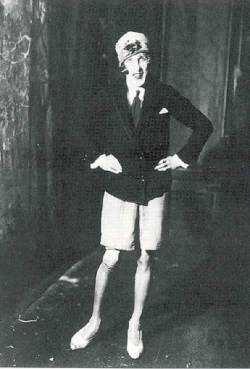
Der
Künstler Heinrich Hoerle (1895-1935) 1929 während des Kölner Lumpenballs.
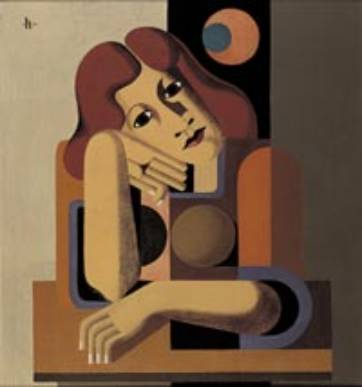
Heinrich
Hoerle. Melancholisches Mädchen. 1930. Öl auf Holz.
76,5 x 70,5 cm.
â
Hoefer, Karl
No Images Available.
â
Hoffman, Eugen
No Images Available.
â
Itten, Johannes
Johannes Itten (November 11, 1888 - May 27, 1967) was a Swiss painter, designer teacher, writer
and theorist associated with the Bauhaus
school.
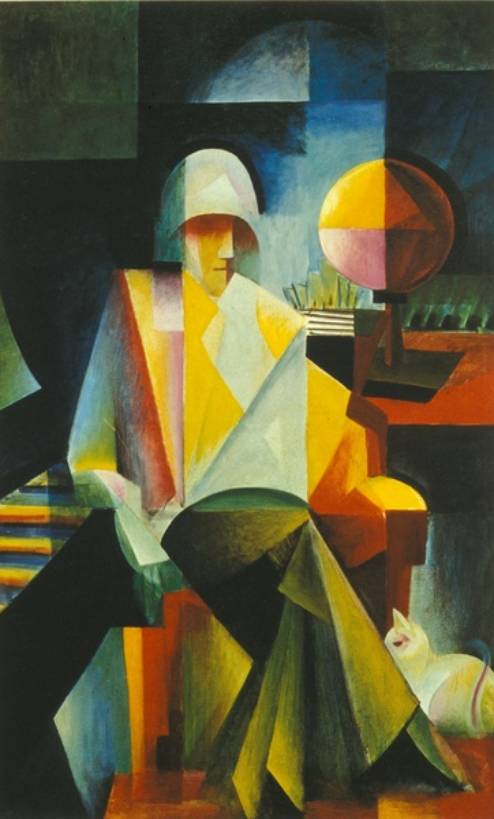
Johannes
Itten. Der Bach-Sänger (Helge Lindberg).
1915.
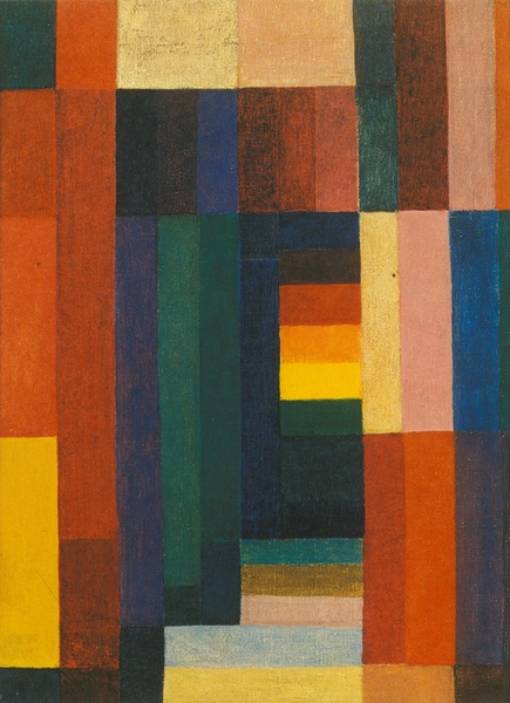
Johannes
Itten. Horizontal - Vertikal. 1915.
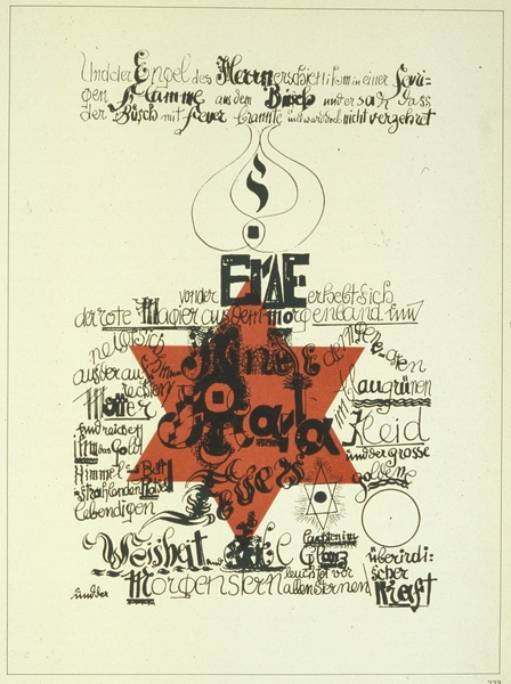
Johannes
Itten. Spruch. 1921.
â
Jawlensky, Alexej von
Alexej Georgewitsch
von Jawlensky (?March 13,
1864 - March 15, 1941) was a Russian expressionist painter,
active in Germany.
He was a member of the Blue Rider
group (Der Blaue
Reiter). He was also a member of the Blue Four.
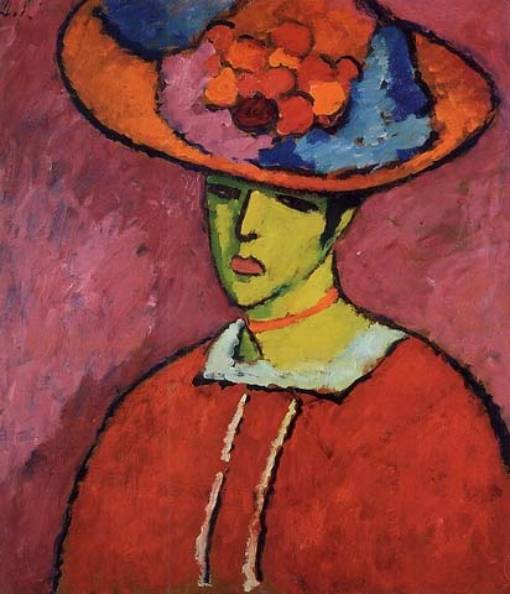
Alexej
von Jawlensky. Schokko mit Tellerhut.
1910.

Alexej
von Jawlensky. Symphony in Rose. 1923.
â
Johansen, Eric
No Images Available.
â
Kallmann, Hans Jürgen
No Images Available.
â
Kandinsky, Wassily
Wassily Kandinsky
(First name sometimes spelled as "Vasily," "Vassily" or
"Vasilii") (December 16,
1866 - December 13, 1944) was a Russian-born painter and art theorist.
One of the most important 20th-century
artists, alongside Picasso
and Matisse, he is credited
with painting the first abstract
works in the history of modern art.

Wassily
Kandinsky. Autumn in Bavaria. 1908. Oil on
cardboard. 33x45cm.
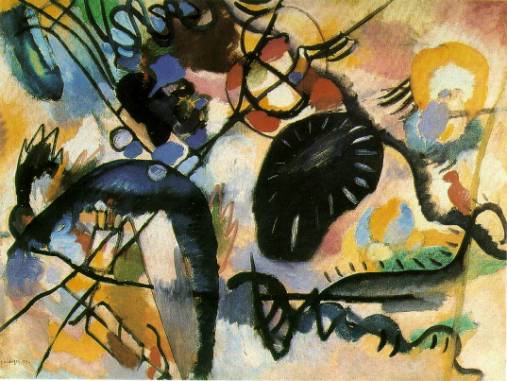
Wassily
Kandinsky. Black Spot I. 1912. Oil on canvas. 100
x 130 cm.
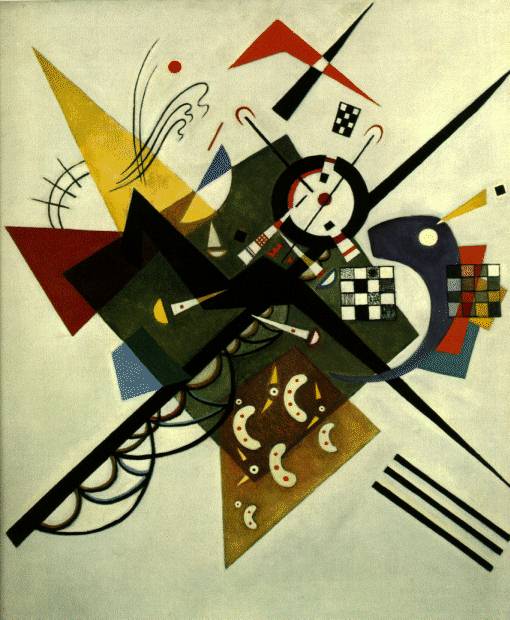
Wassily
Kandinsky. On White II. 1923. Oil on canvas. 105
x 98cm.
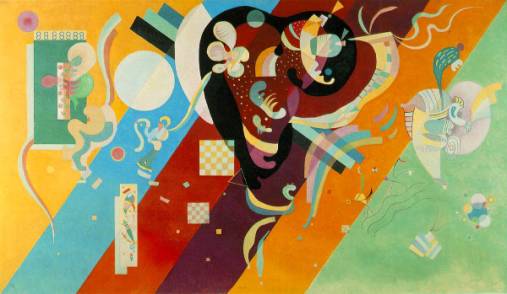
Wassily
Kandinsky. Composition IX. 1936. Oil on canvas.
113.5 x 195 cm.
â
Katz, Hans
No Images Available.
â
Kirchner, Ernst Ludwig
Ernst Ludwig
Kirchner (May 6, 1880-June 15, 1938) was a German expressionist painter and one of the
founders of the artists group Die Brücke or "The
Bridge."
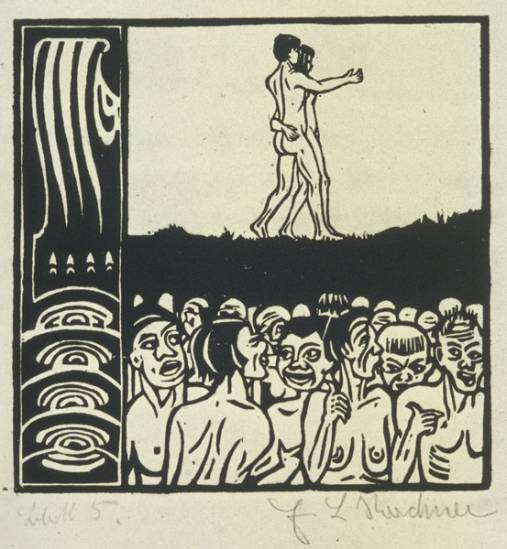
Ernst
Ludwig Kirchner. Vor den Menschen.
1905.
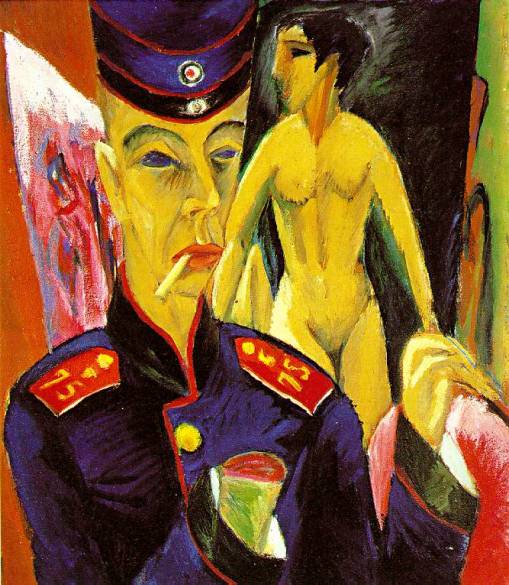
Ernst
Ludwig Kirchner. Selbstbildnis als Soldat (Self-portrait as soldier). 1915. Oil on canvas. 69.2 x 61 cm.
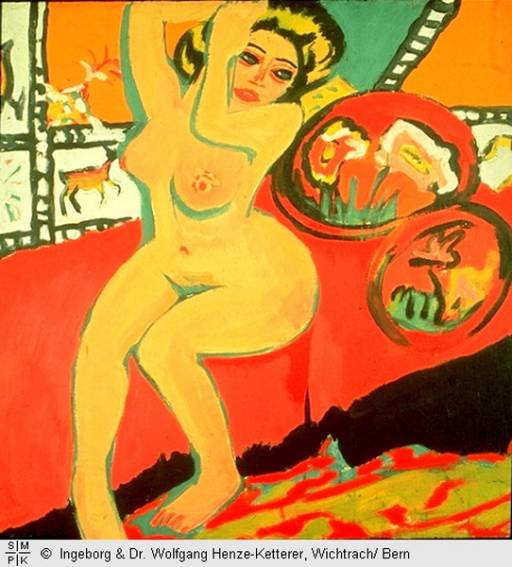
Ernst
Ludwig Kirchner. Akt im Atelier (Norilein) / Sitzender Akt mit erhobenen
Armen. 1909-11.
â
Klee, Paul
Paul Klee (December 18,
1879 - June 29, 1940) was a Switzerland-born painter.
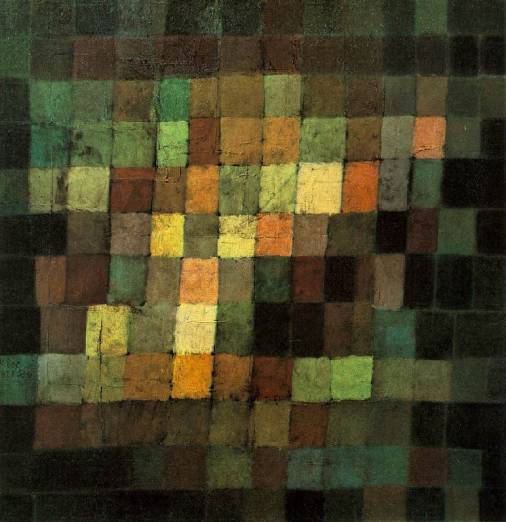
Paul
Klee. Ancient Sound, Abstract on Black.
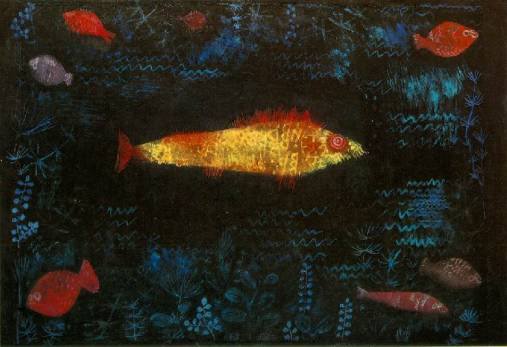
Paul
Klee. The Golden Fish. 1925. Oil and watercolor
on paper, mounted on cardboard. 50 x 69 cm.
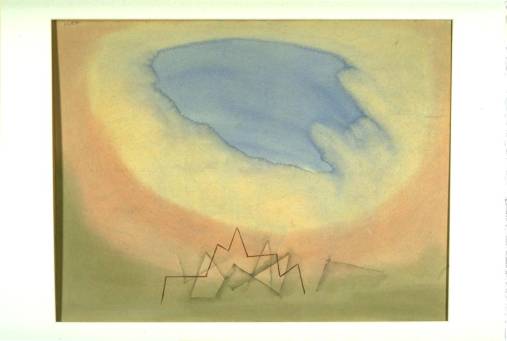
Paul
Klee. Danger of Lightning. 1931.
â
Klein, Cesar
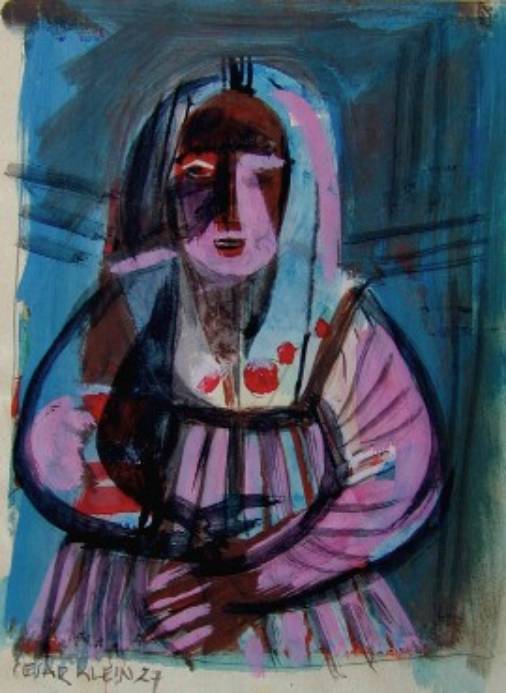
Cesar
Klein. Brustbild einer sdlndischen Frau in italienischer oder
südfranzösischer Tracht. 1927. Öltempera auf
Zeichenpapier. 17.5 x 13.5 cm.
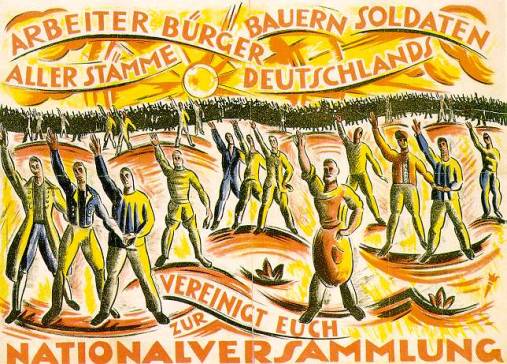
Cesar
Klein. Plakat zur Wahl der Nationalversammlung: Arbeiter Bürger Bauern
Soldaten... 1919.
â
Kleinschmidt, Paul
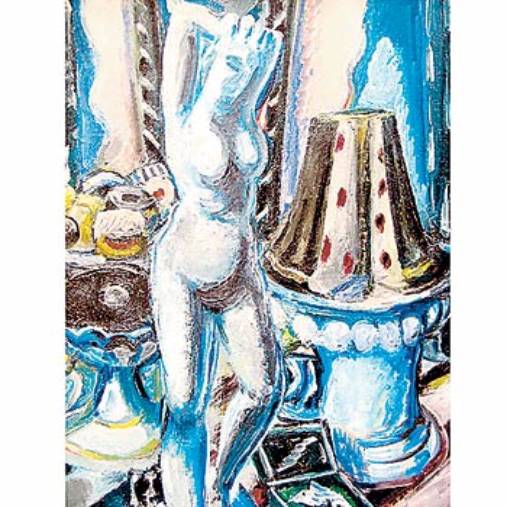
Paul
Kleinschmidt,. Blue Nude.
â
Kokoschka, Oskar
Oskar Kokoschka (March 1, 1886-February 22, 1980) was an Austrian artist and poet,
best known for his intense expressionistic
portraits and landscapes.
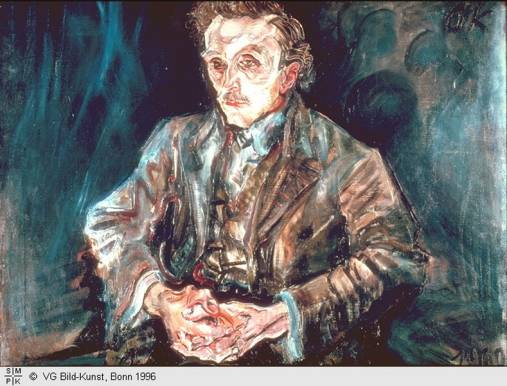
Oskar
Kokoschka. Der Wiener Baumeister Adolf Loos / Adolf Loos. 1909.
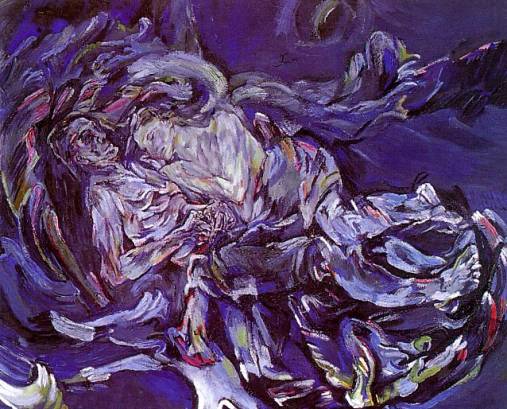
Oskar
Kokoschka. Bride of the Wind. 1914.
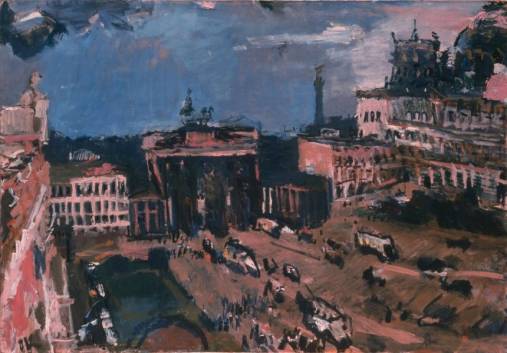
Oskar
Kokoschka. Pariser Platz in Berlin / Brandenburger Tor / Berlin, Pariser
Platz. 1925-26.

Oskar
Kokoschka. View of Jerusalem. 1929-1930. Oil on
canvas.
â
Lange, Otto
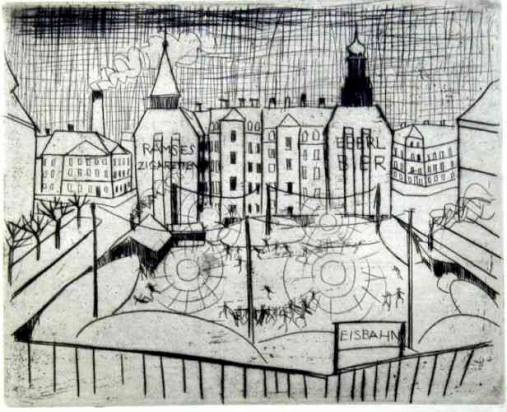
Otto
Lange. Frankes Eisbahn in Dresden (Frankes icerink in Dresden). 1916. Etching on China-paper. 32,5x40.

Otto
Lange. Im Zelt von König und Königin (Blatt 2 der Folge "Van Zantens
Glückliche Zeit"). 1919/20. Farbholzschnitt
auf Bütten. 181 x 136.

Otto
Lange. Dahlien. 1920's. Öl auf Leinwand.
745 x 665 mm.
â
Lehmbruck, Wilhelm
Wilhelm Lehmbruck (1881-1919) was a German sculptor. His works,
including female nudes, were known for an elongation common to Gothic architecture.

Wilhelm
Lehmbruck. Standing Youth. 1913.
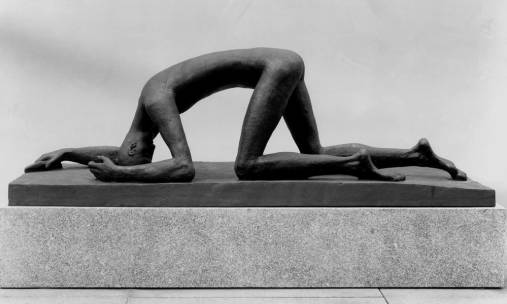
Wilhelm
Lehmbruck. Der Gestürzte. 1915-16.
â
Lissitzky, El
http://www.vanabbemuseum.nl/lissitzky/
This is a must see website from the
Van Abbemuseum in Eindhoven! It is
by far a better collection
than I could possibly offer of one of my favorite
artists.
Lazar Mikhailovitch
Lissitsky (also known as El) (November 23,
1890 - December 30, 1941) was one of the main
disciples of Kazimir
Malevich. Initially following the work of Marc Chagall that tried to
recover the Jewish tradition in the city of Vitebsk, Lissitsky felt
himself attracted by the artistic procedures of Suprematism and started to
experiment with his PROUNs (an acronym for new perspectives on art). Later he
was commissioned as a cultural representative in Germany from 1921 on. In Germany he
developed his career as a graphic designer with some historically very
important works such as the book Dlia Golossa (For the Voice) a collection of
poems from Vladimir
Mayakovsky, designed with facilities to be read in various
situations (the model was a phone index); the book "Die Kunstismen"
(The Artisms), together with Jean Arp,
an "abbregé" of what were the most important artistic movements at
the time.

El
Lissitzky. Committee of Combat Unemployment.
1919. Inks and Lithograph.

El
Lissitzky, Proun G7. 1923. Distemper, tempera,
varnish and pencil on canvas. 77 x 62 cm.
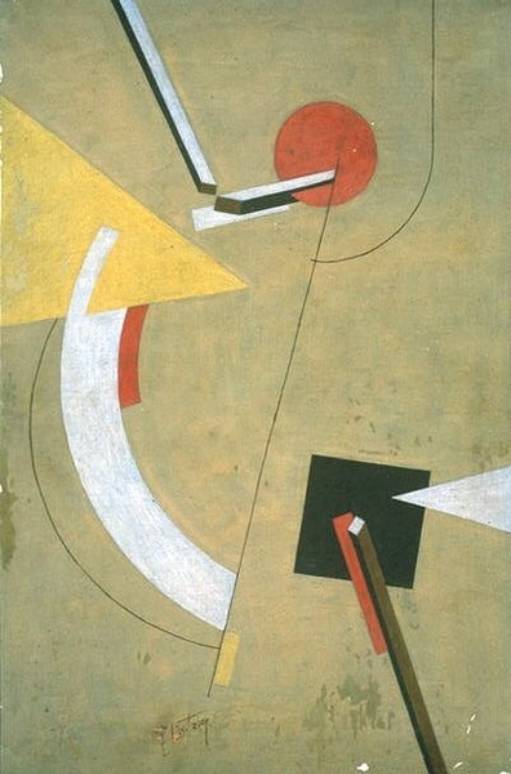
El
Lissitzky. Proun. 1923.
â
lüthy, Oskar
No Images Available.
â
Marc, Franz
Franz Marc (b. February 8, 1880, Munich - d. March 4, 1916, Verdun) was one of the
principal painters
of the German expressionist
movement.

Franz
Marc. The Yellow Cow. 1911.

Franz
Marc. The fate of the animals. 1913.
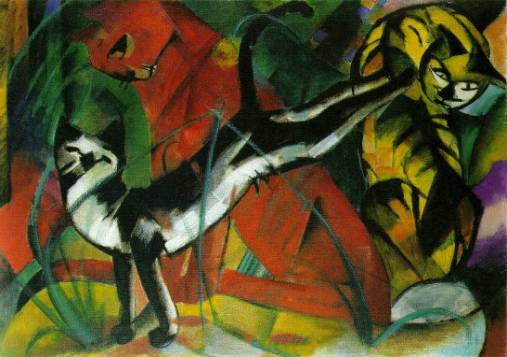
Franz
Marc. Three cats. 1913.
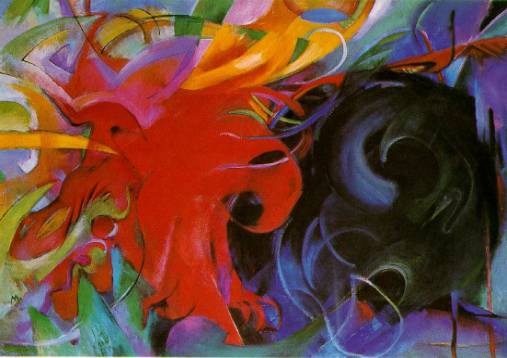
Franz
Marc. Fighting Forms. 1914.
â
Marcks, Gerhard
Gerhard Marcks (born
18 February 1889 in Berlin, died 13 November 1981 in Burgbrohl,
Eifel) was a German sculptor, famous
for his woodcuts, drawings, lithographs and ceramics.
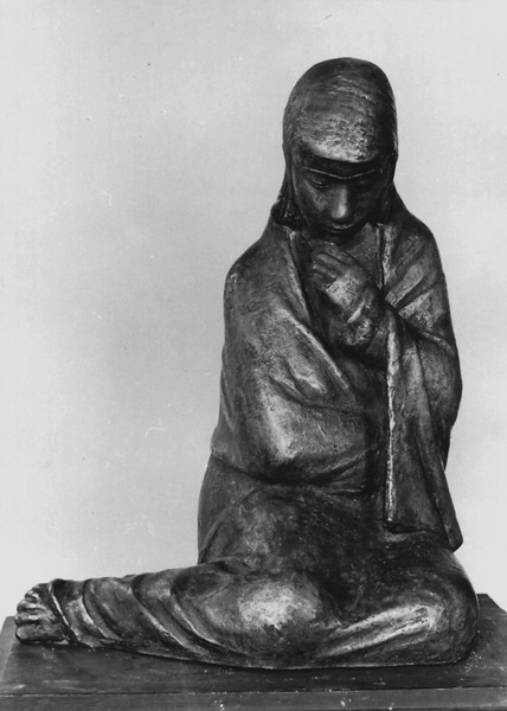
Gerhard
Marcks. Still allein. 1932.
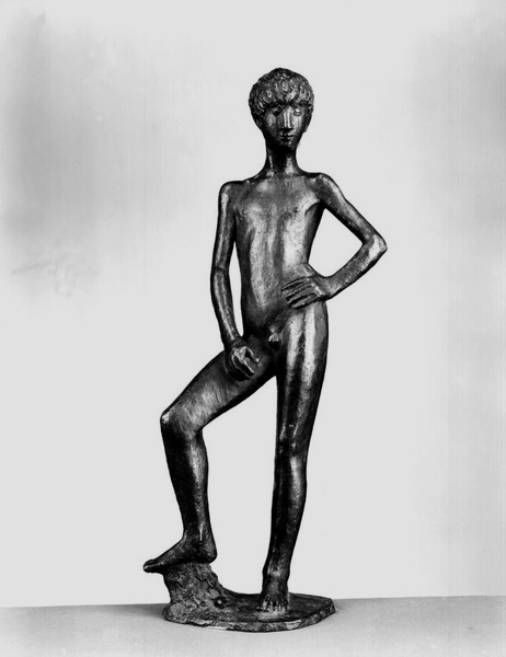
Gerhard
Marcks. Raffaelo. 1941.
â
Matare, Ewald
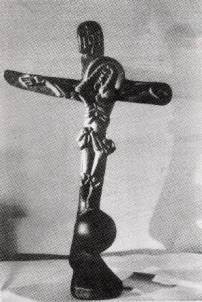
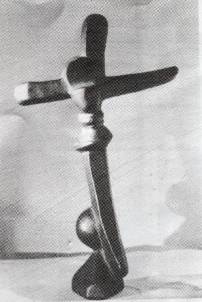
Ewald Mataré. Kruzifix,
Gußeisen. 1936. Front and Back.
â
Meidner, Ludwig

Ludwig
Meidner. Rue Lamarck in Montmartre.
1906.
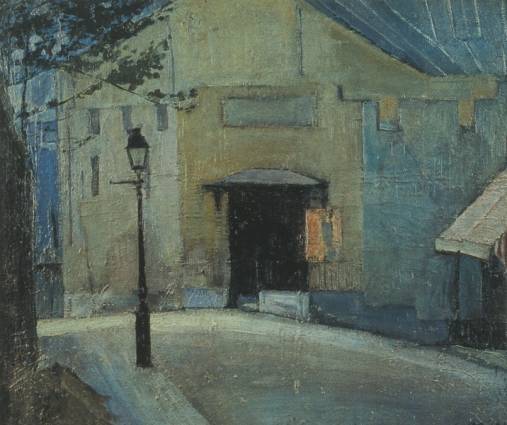
Ludwig
Meidner. Straße auf der Butte Montmartre.
1907.
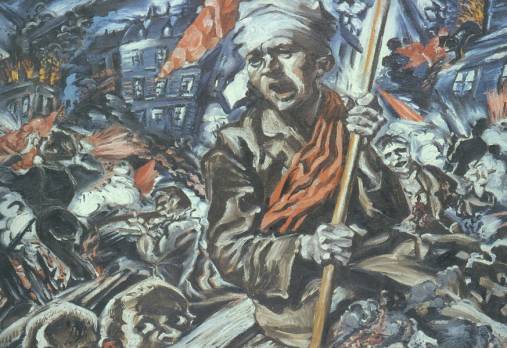
Ludwig
Meidner. Barrikade. 1912.
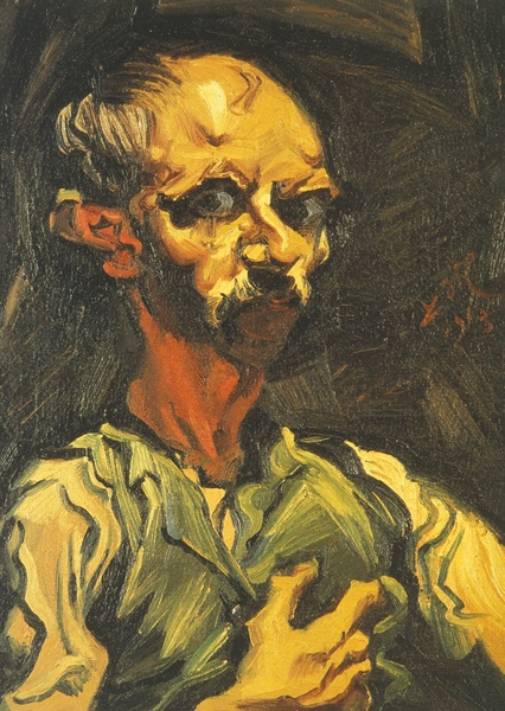
Ludwig
Meidner. Mein Nachtgesicht. 1913.

Ludwig
Meidner. Brennende Stadt. 1913.
â
Metzinger, Jean
Jean Metzinger (1883-1956) was a French painter.
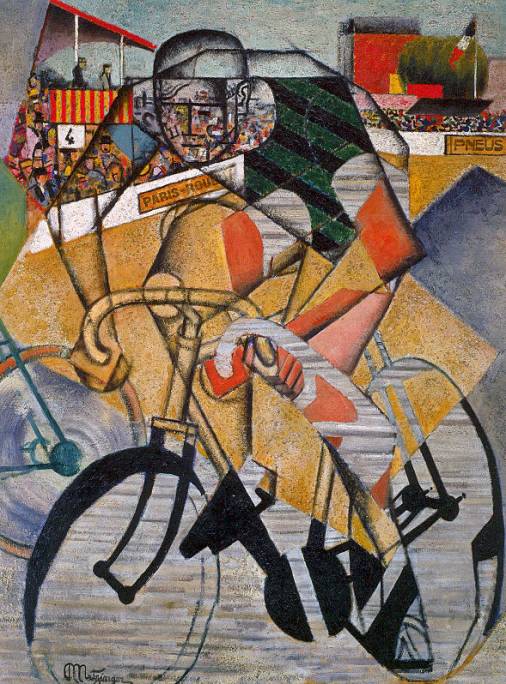
Jean
Metzinger. At the Cycle-Race Track.
1912. Oil on and collage on canvas.

Jean
Metzinger. Cubist Composition, Still Life.
1918. Oil on canvas.
â
Mitschke-Collande, Constantin von
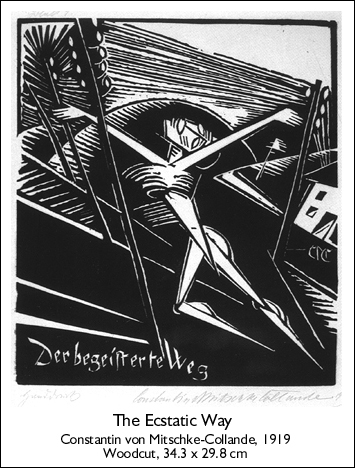
Constantin
von Mitschke-Collande. The Ecstatic Way.
1919. Woodcut. 34.3 x 29.8 cm.
â
Moholy-Nagy, Laszlo
László Moholy-Nagy
(probably July 28,
1895 - November 24, 1946) was a Hungarian painter and photographer as well as
professor in the Bauhaus
school.
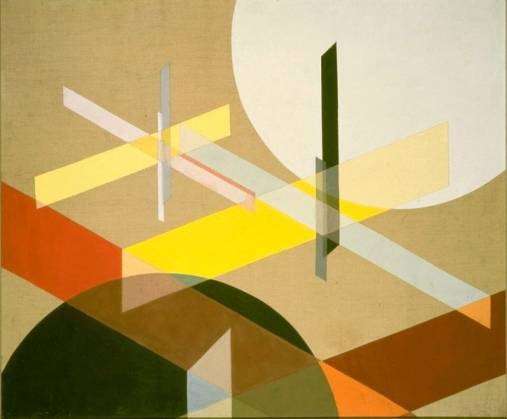
László
Moholy-Nagy. Komposition Z VIII. 1924.
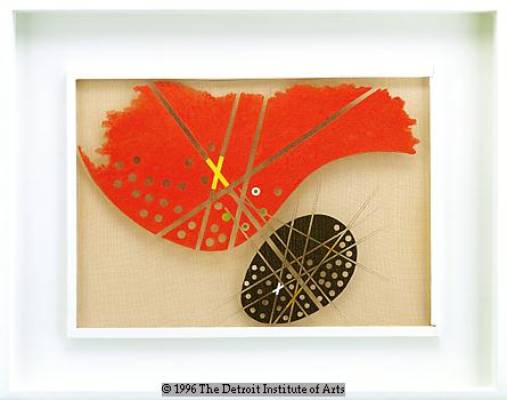
László
Moholy-Nagy. Space Modulator, Red over Black. 1946.
Oil on plastic.

László
Moholy-Nagy. Abstract Composition.
â
Moll, Margarethe
No Images Available.
â
Moll, Oskar
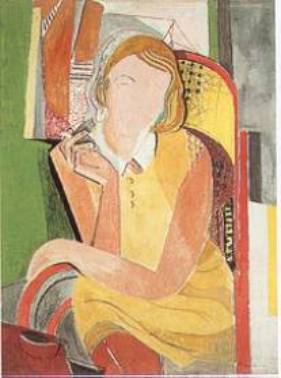
Oskar
Moll. Inge III mit Zigarette und Rohrstuhl.
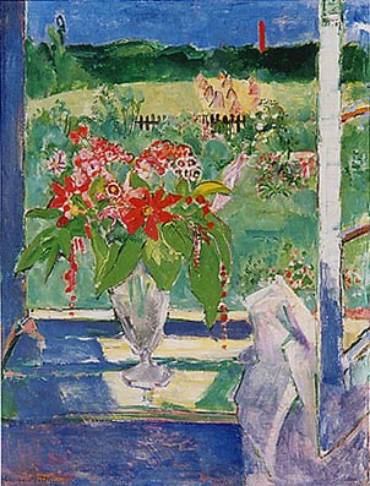
Oskar
Moll. Blumenstrauß mit Fensterausblick.
1925. 100 x 75 cm. Öl auf Leinwand.

Oskar
Moll. Fensterausblick. 1932.
â
Molzahn, Johannes

Johannes
Molzahn. Ferntaster II. 1920.

Johannes
Molzahn. Männliche Kurven. 1927.
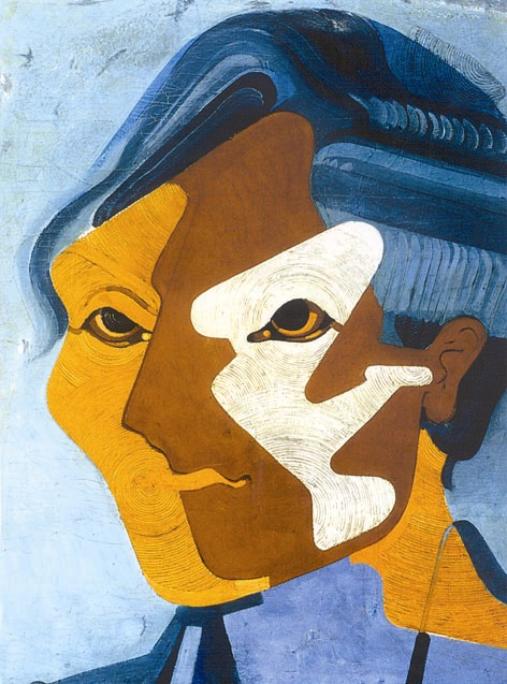
Johannes
Molzahn. Gedächtnis Otto Mueller.
1930. Öl/Leinwand.
â
Mondrian, Piet
Piet Mondrian (March 7, 1872 - February 1, 1944) was a Dutch painter
and an important contributor of the De Stijl art movement,
which was founded by Theo van
Doesburg.
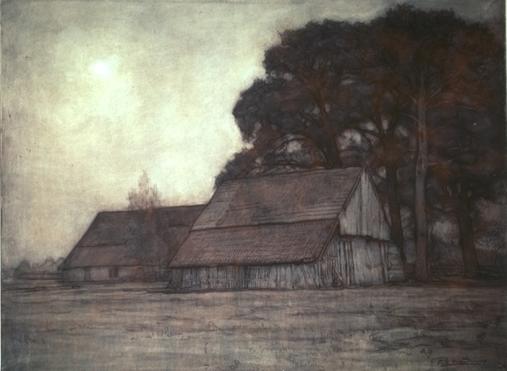
Piet
Mondriaan. Schafstall am Abend. 1907.
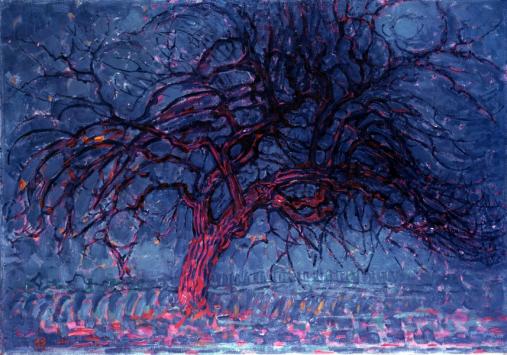
Piet
Mondriaan. Der rote Baum. 1910.
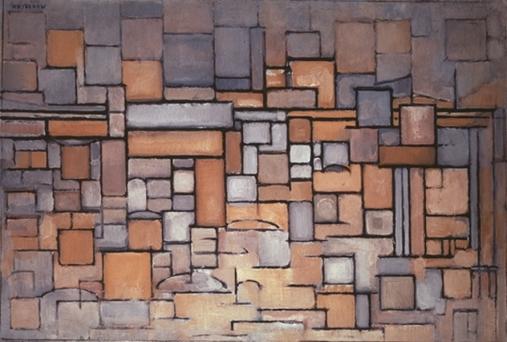
Piet
Mondriaan. Fassade in braun und grau.
1913.
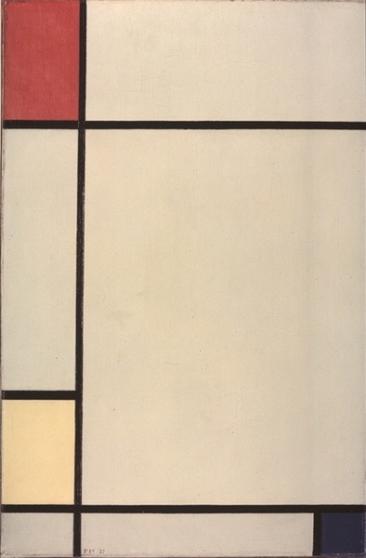
Piet
Mondriaan. Komposition. 1927.
â
Muche, George
No Images Available.
â
Meuller, Otto

Otto
Mueller. Junges Mädchen vor Männerköpfen.
1912.

Otto
Mueller. Die Gattin des Künstlers.
â
Nagel, Erich
No Images Available.
â
Nauen, Heinrich
No Images Available.
â
Nay, Ernst Wilhelm

Ernst
Wilhelm Nay. Selbstbildnis. 1922.
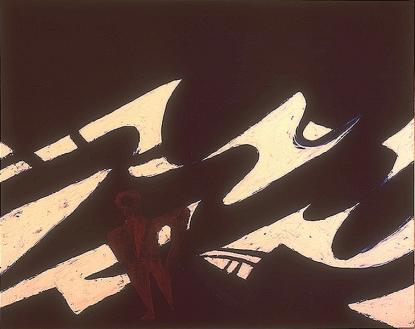
Ernst
Wilhelm Nay. Stürmische Wellen. 1935.
â
Neistrath, Karel
No Images Available.
â
Nolde, Emil
Further Information
about Emil Nolde
Emil Nolde (August 7, 1867 - April 15, 1956) was a German painter born as Emil
Hansen in the village of Nolde, Germany, near the [present-day] German-Danish
border. He died in Seebüll, Germany. Since 1902 he called himself after his
birthplace. He was one of the first expressionists and is
considered to be one of the great watercolor painters of the
20th century. He is known
for his expressive choice of colors.
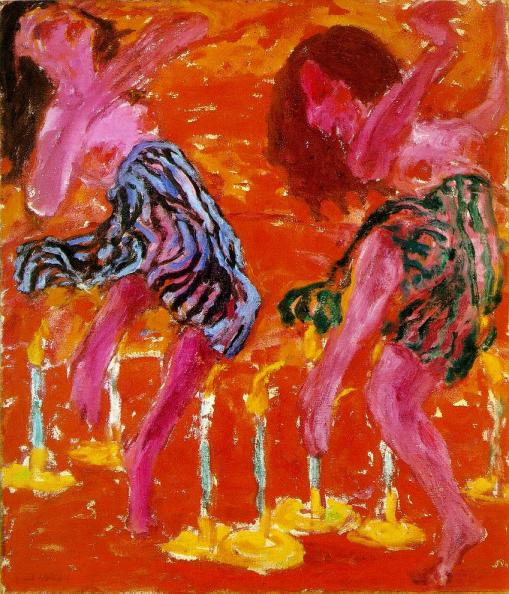
Emil
Nolde Candle Dancers. 1912. Oil on canvas.
100.5 x 86.5 cm.
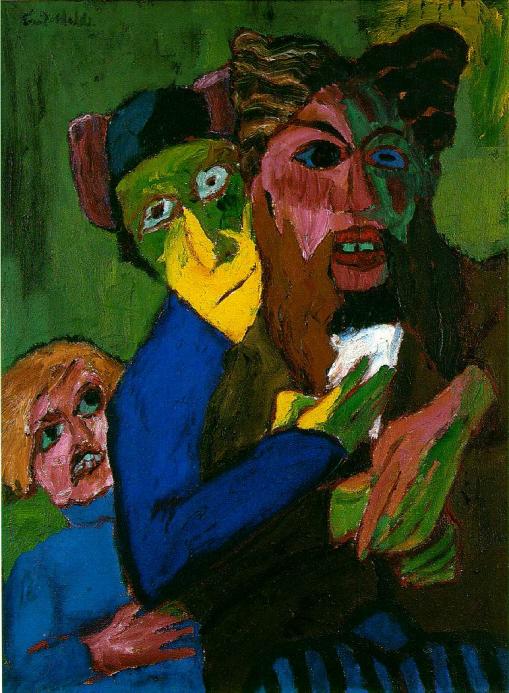
Emil
Nolde. Excited People. 1913. Oil on canvas.
102.5 x 76.5 cm.
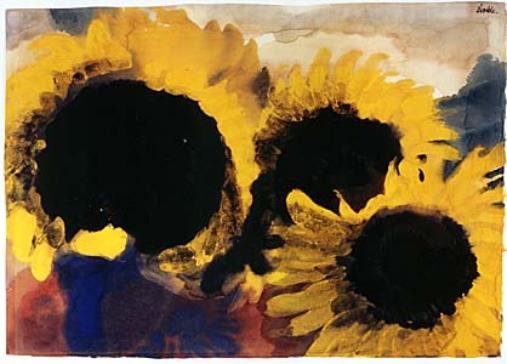
Emil
Nolde. Sonnenblumen. 1930.
â
Pankok, Otto
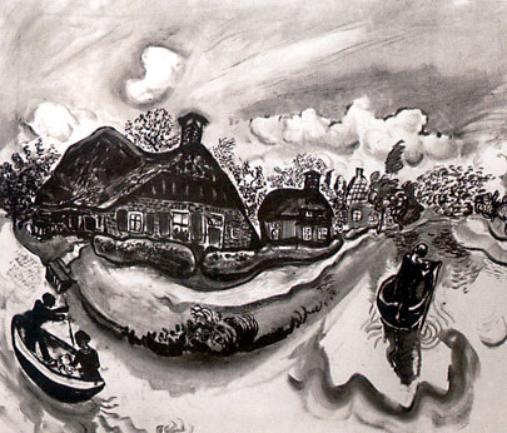
Otto
Pankok. Drevenack: Boote. 1930. Kohle. 100 x 120
cm.
â
Pechstein, Max
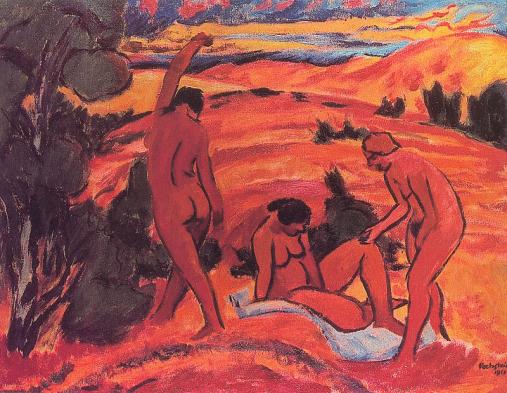
Max Pechstein. Three
Nudes in a Landscape. 1911. Oil on cavnas.
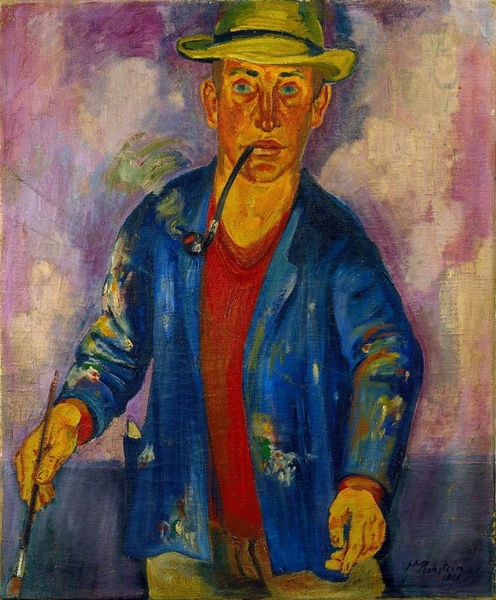
Max
Pechstein. Selbstbildnis / Selbstbildnis mit Pinsel und Pfeife. 1926.
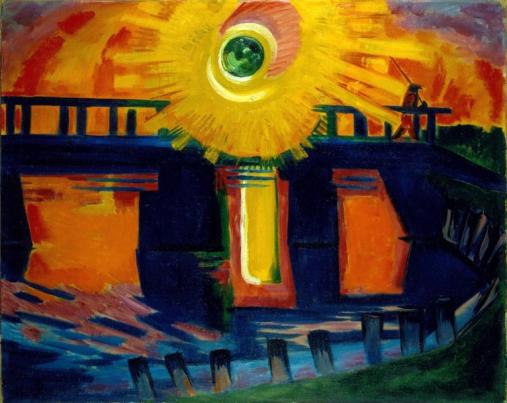
Max
Pechstein. Sonnenuntergang / Strombrücke in Leba.
1921.
â
Peiffer-Watenphul, Max
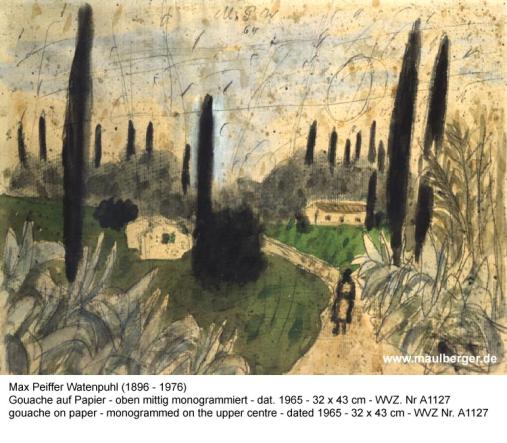
â
Purrmann, Hans
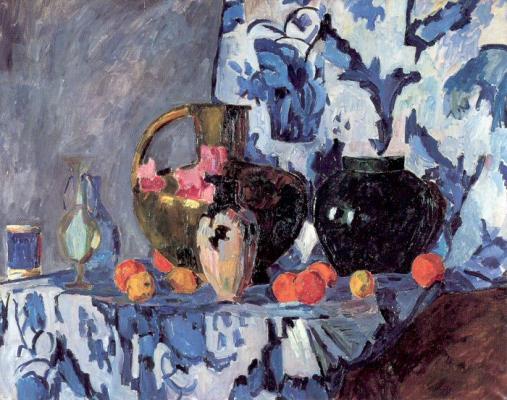
Hans
Purrmann. Still Life. 1908. Oil on canvas.
â
Rauh, Max
No Images Available.
â
Richter, Hans
Hans Richter was a Dadaist artist, filmmaker and writer. He
was born on April 6,
1888 in Berlin and died on February 1, 1976 in Minusio,
near Locarno, Switzerland. One of the
founders of the Dada movement, he was active in Zürich, Switzerland from
1916 to 1920. He moved to the United States in 1940 and became an American
citizen.
Richter was also the
author of a first-hand account of the Dada movement titled Dada: Art and
Anti-Art.
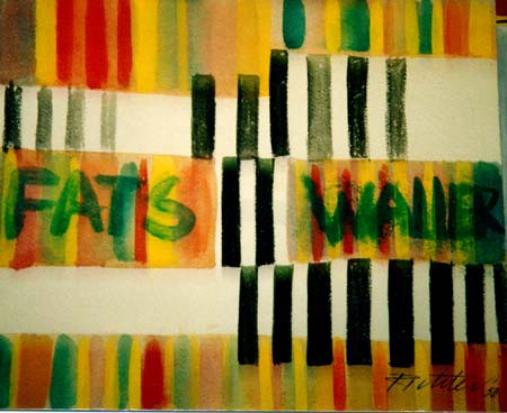
Hans
Richter. Fats Waller.
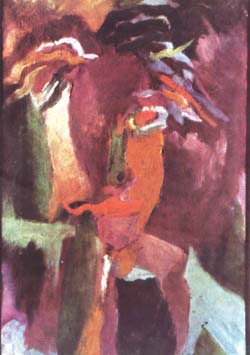
Hans
Richter. Auto Retrato Visionário.
1917.
â
Röder, Emy
No Image Available.
â
Rohlfs, Christian
Christian Rohlfs
(born November 22,
1849 in Gross
Niendorf, Kreis Segeberg, Germany; died January 8, 1938 in Hagen, Westfalia, Germany)
is one of the important representatives of German expressionism.
In 1937 his works
were confiscated, he was forbidden to paint and was excluded from the
"Preussische Akademie der Kuenste in Berlin".
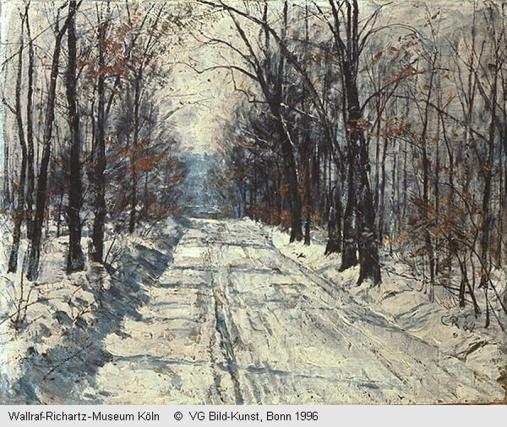
Christian
Rohlfs. Waldweg im Winter / Chaussee nach Tiefurt im Webicht bei Weimar. 1889.
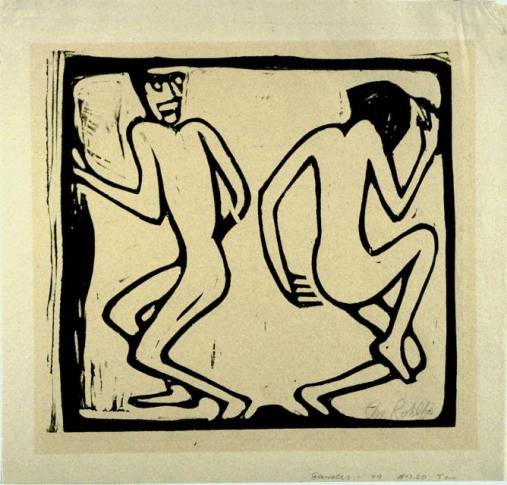
Christian
Rohlfs. Dancers (Zwei Tanzende).
1913. Linoleum Cut.
â
Scharff, Edwin
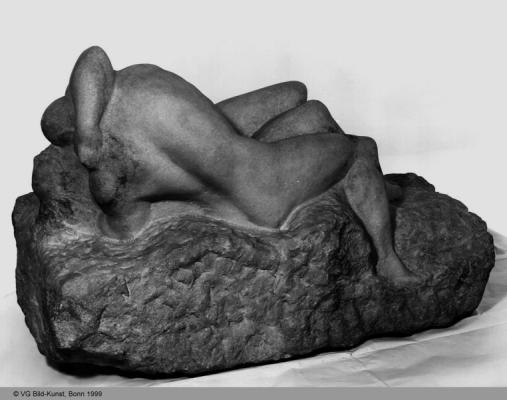
Edwin
Scharff. Liebespaar. 1921-1922.
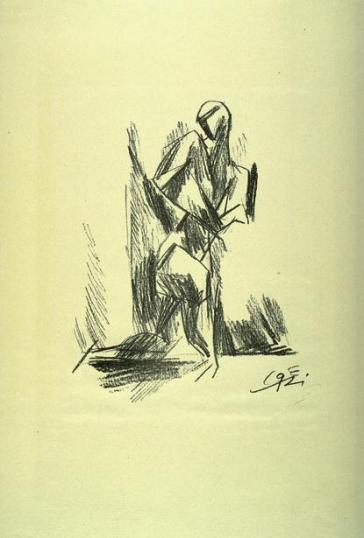
Edwin
Scharff. Kneeling Figure (Figur) (Figürliche Komposition). 1921.
â
Schlemmer, Oskar
Oskar Schlemmer (September 4, 1888 - April 13, 1943) was a German artist
associated with the Bauhaus
school.

Oskar
Schlemmer. Stairs. 1932.

Oskar
Schlemmer. Abstract Figure. 1921.
â
Schlichter, Rudolph
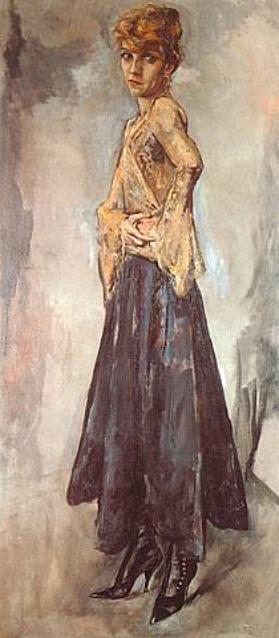
Rudolf
(Udor Retyl) Schlichter. Speedy standing.
1932.
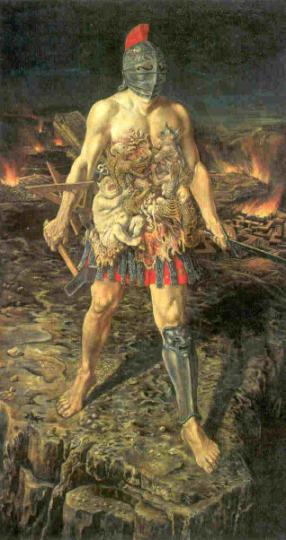
Rudolph
Schlichter. Blinde Macht. 1937.
â
Schmidt-Rottluff, Karl
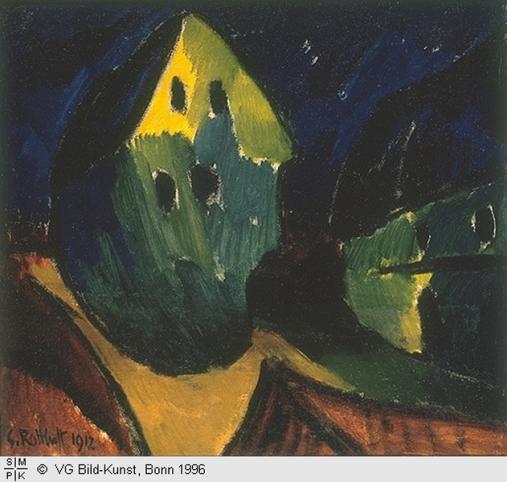
Karl
Schmidt-Rottluff. Häuser bei Nacht.
1912.
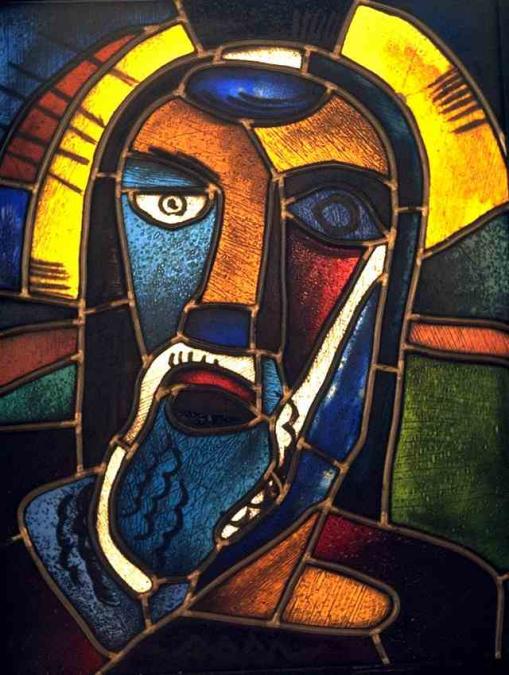
Karl
Schmidt-Rottluff. Head of Christ.
1919.
â
Scholz, Werner
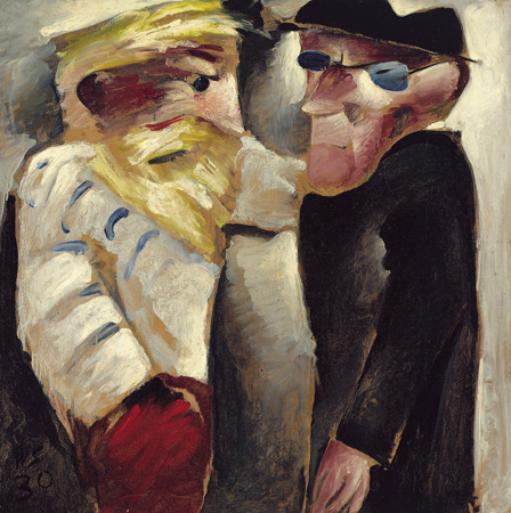
Werner
Scholz. Die Begegnung. 1930. Öl auf Karton. 74,3
x 74,3 cm.
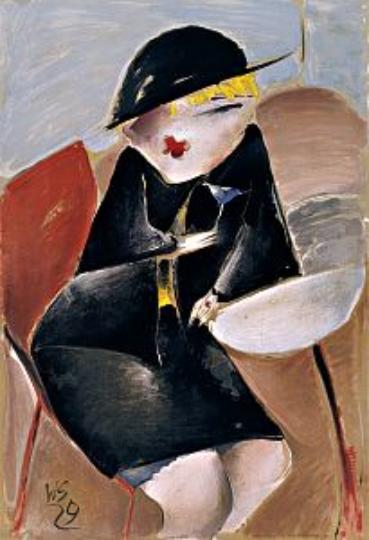
Werner
Scholz. Halbweltdame am Caféhaustisch.
1929.
â
Schreyer, Lothar
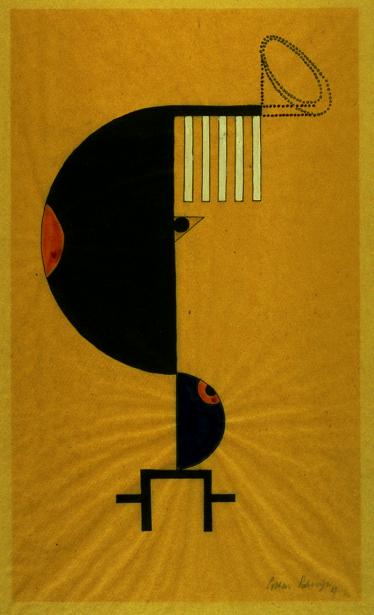
Lothar
Schreyer. The Night (also called "Colorform #2"). 1922. Lithograph and Watercolor.
â
Schubert, Otto
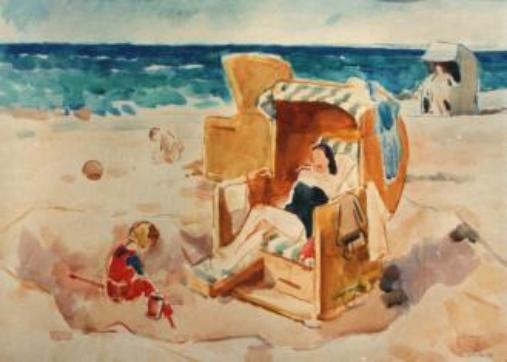
Otto
Schubert. Im Strandkorb.
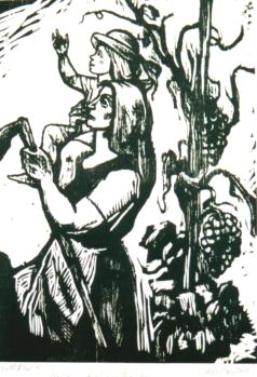
Otto
Schubert. Mutter und Kind im Weinberg.
â
Schwitters, Kurt
Biography (Very
Good)
Kurt Schwitters (June 20, 1887 - January 8, 1948) was a German painter, who was born in Hanover, Germany. Schwitters
participated in the Dada
movement during and after World War I.
His particular contribution to that group was his Merz works, art pieces built
up of found objects into large constructions or even what would later in the
20th century have been called 'installations'. The Sprengel Museum in Hanover has a
reconstruction of the most famous of these installations called 'Merzbau' which
was a redesign of Schwitters own apartment in Hanover. The original Merzbau was
destroyed in an air raid during WW II.

Kurt
Schwitters. Black Collage. 1928.
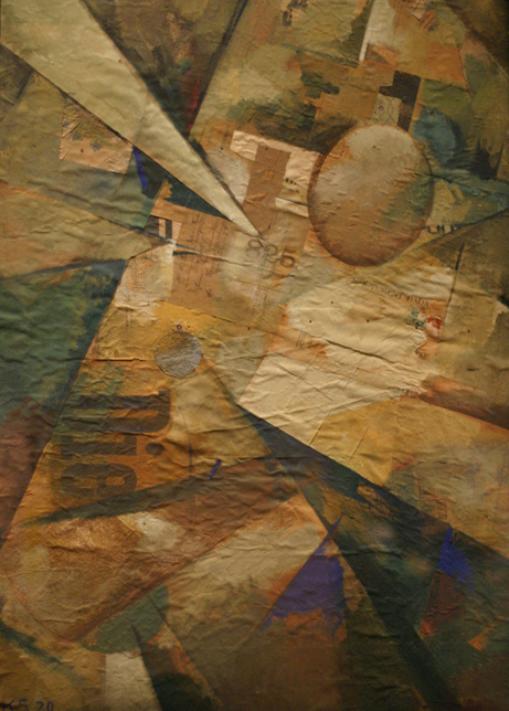
Kurt
Schwitters. Radiating World. 1920.
â
Segall, Lasar
Biography
(Portugese)
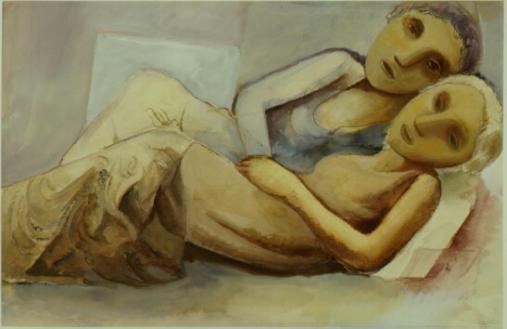
Lasar Segall. Duas Figuras. 1933. guache s/
papel. 46,5 x 70,0 cm.
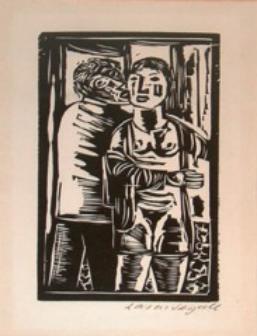
Lasar
Segall. Mangue. Xilogravura.
â
Skade, Friedrich
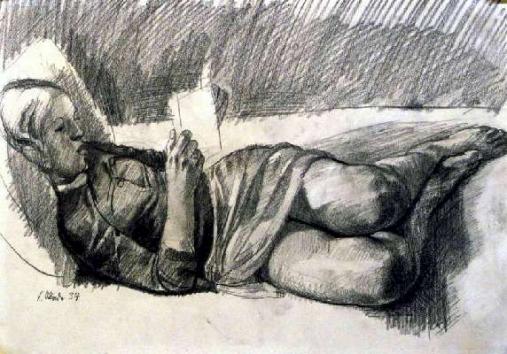
Fritz
Skade. Lesendes Mädchen (Girl reading).
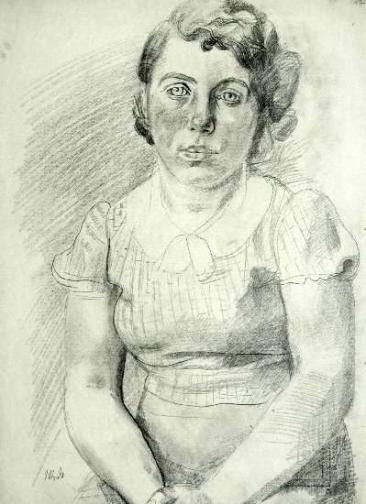
Fritz
Skade. Frau mit gefalteten Händen (Woman with folded hands).
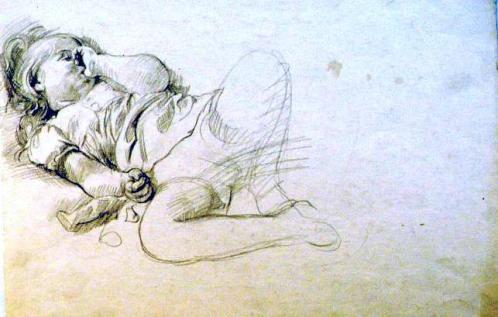
Fritz
Skade. Schlafendes Kind (Child, sleeping).
â
Stukenberg, Friedrich (Fritz)
No Image Available.
â
Thalheimer, Paul
No Image Available.
â
Tietz, Johannes
No Image Available.
â
Topp, Arnold
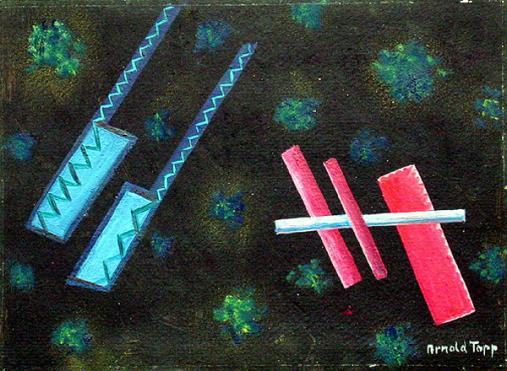
Arnold
Topp (1887 Soest/Westfalen - 1945 missing). Abstrakte Komposition mit Zwei
Zickzacklinien (Abstract Composition with Zigzag Line). 1921. Oil gouache.
â
Völker, Karl
No Image Available.
â
Voll, Christoph
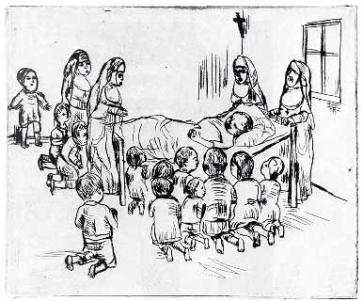
Christoph
Voll. Unknown Title.
â
Wauer, William

William
Wauer. Portrait Nell Walden. 1918.
â
Wollheim, Gert
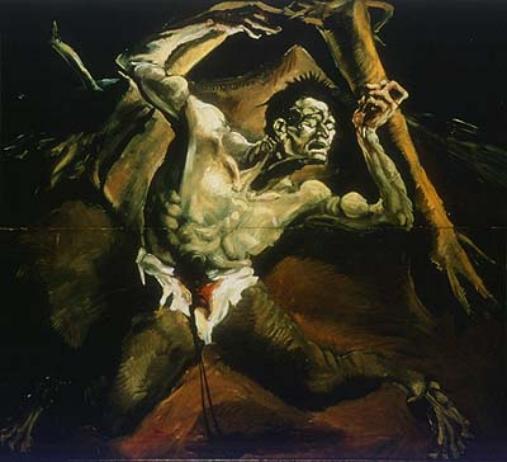
Gert
Wollheim. Der Verwundete (The Wounded One). 1919.
Oil on canvas. 156 x 178 cm. Private collection.
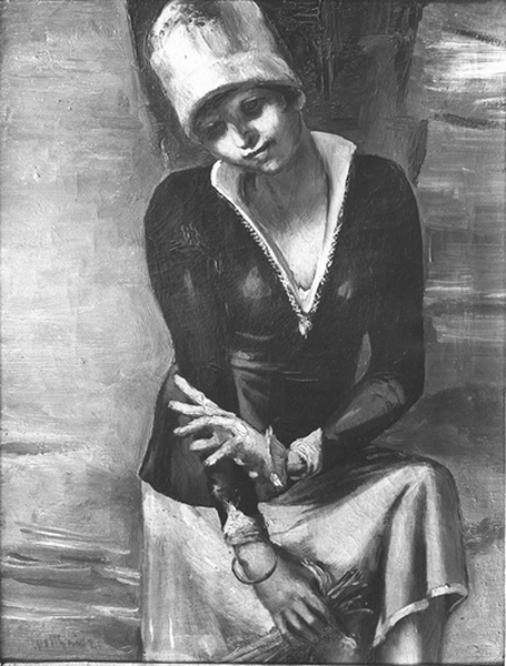
Gert
Wollheim. Damenbildnis / Frau mit gelbem Handschuh. 1924.
The End
Sign my Guestbook
/ View my Guestbook